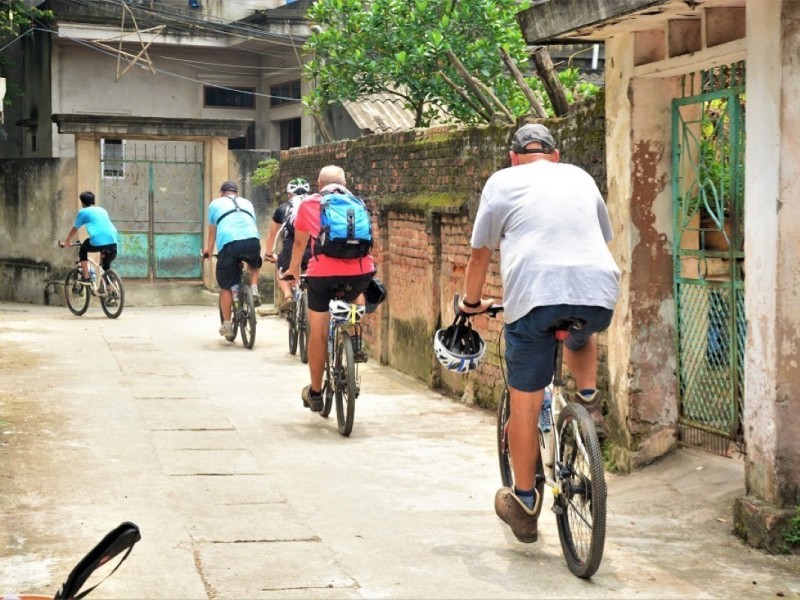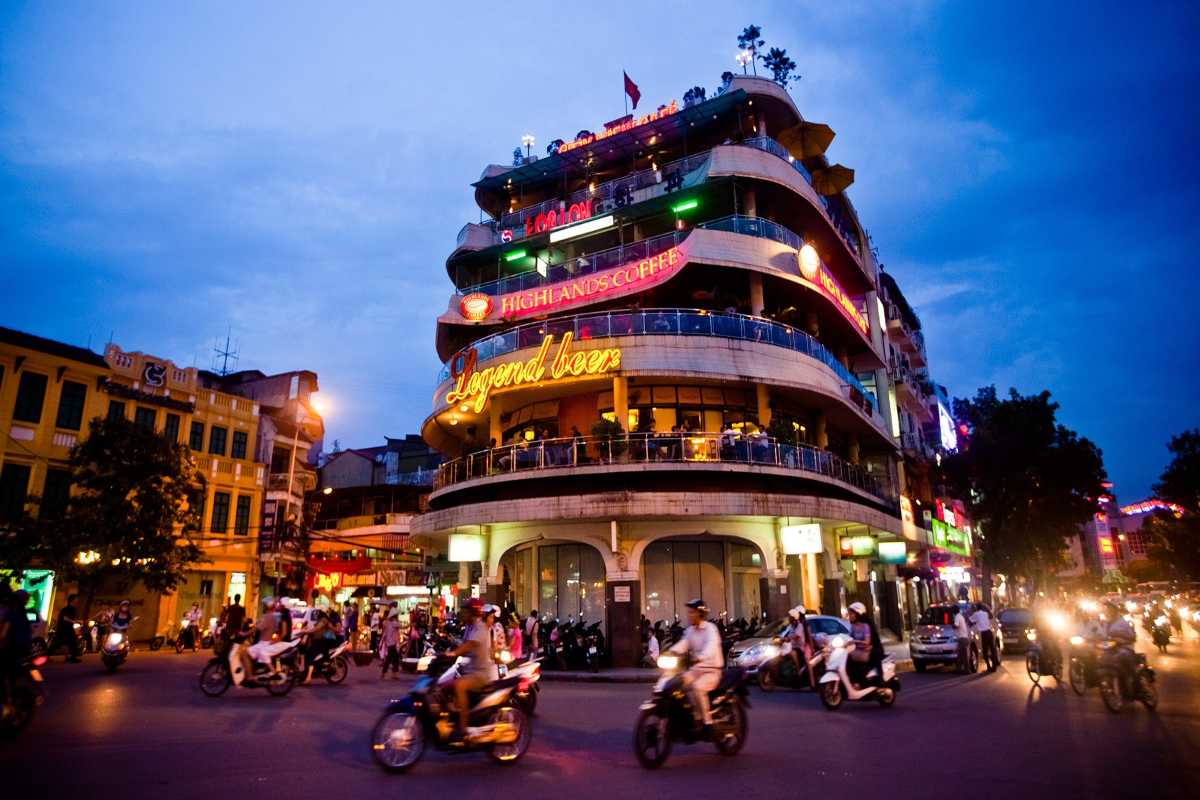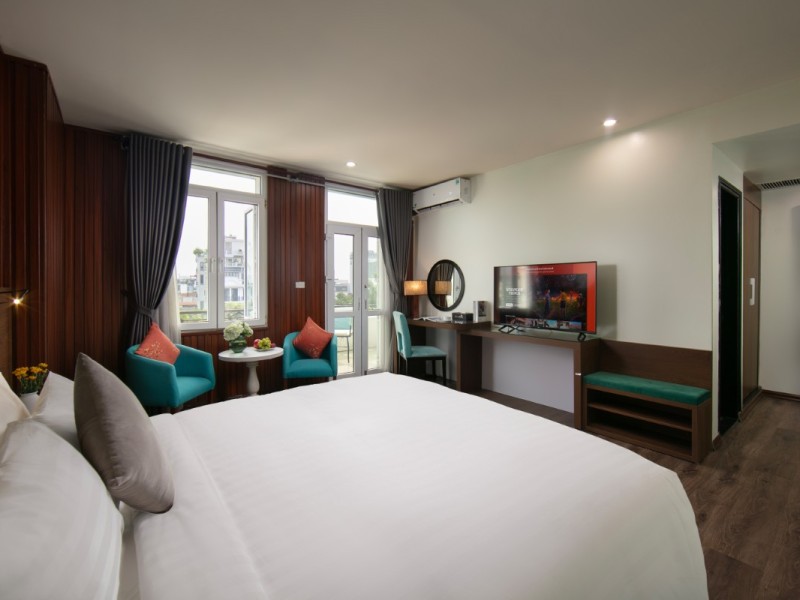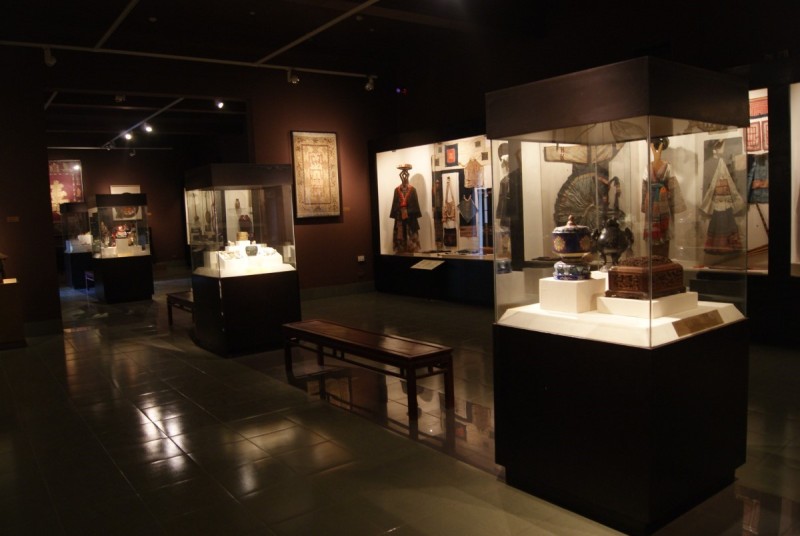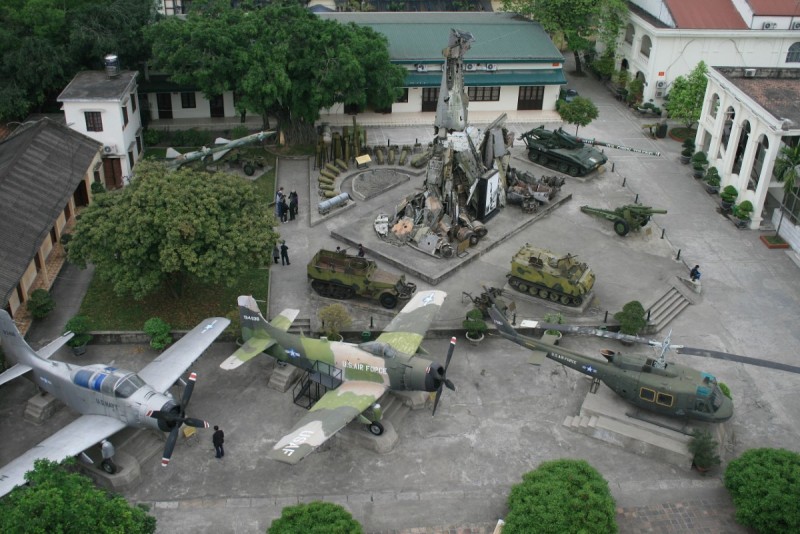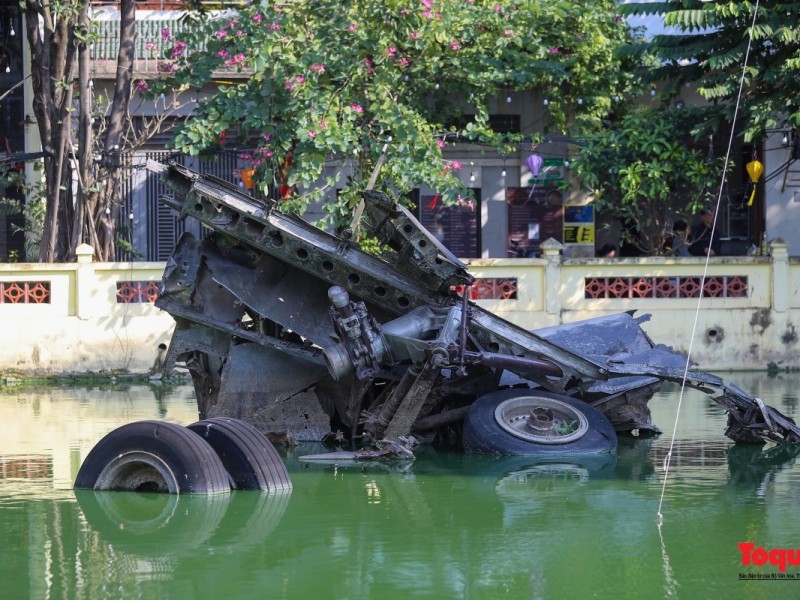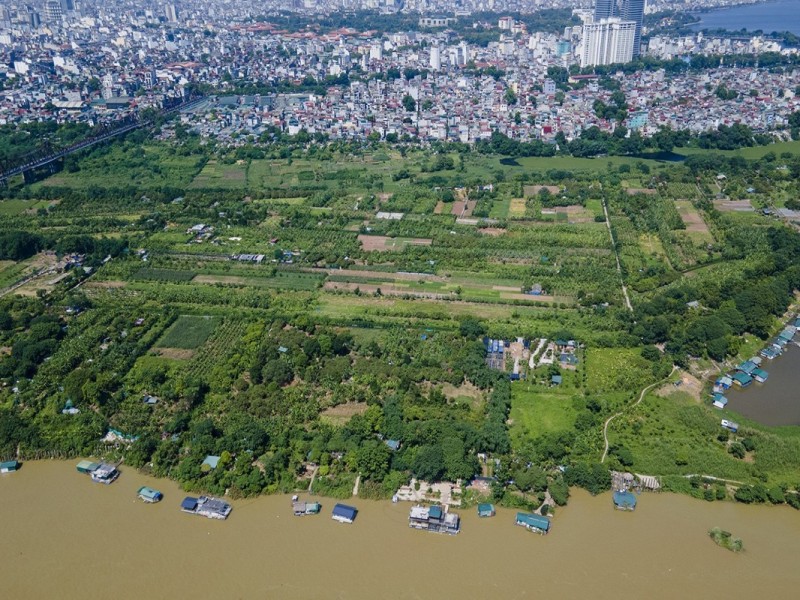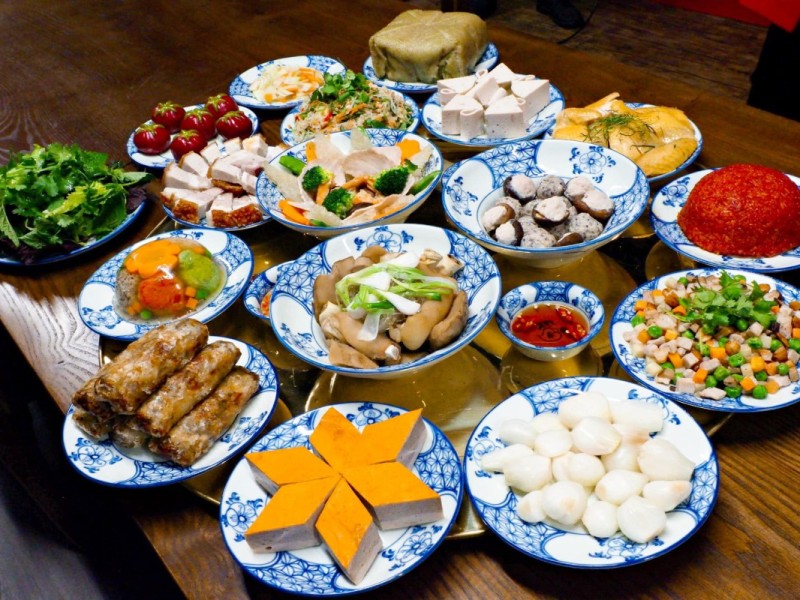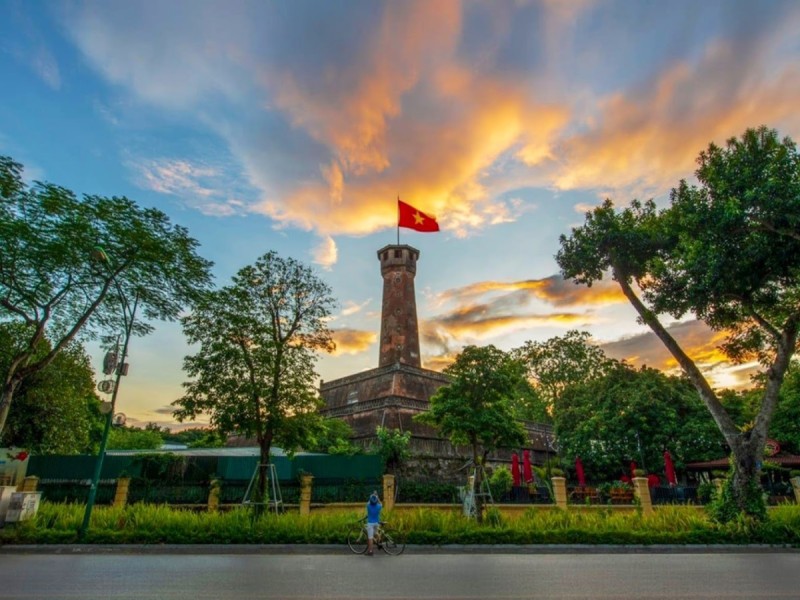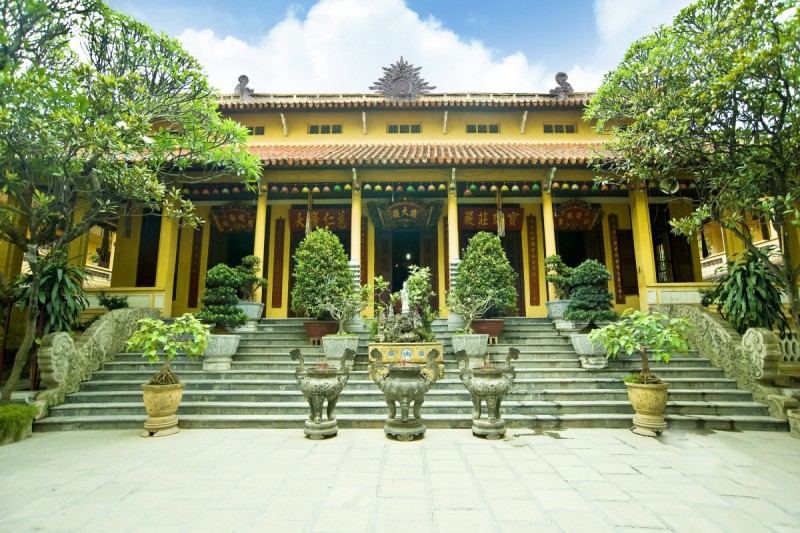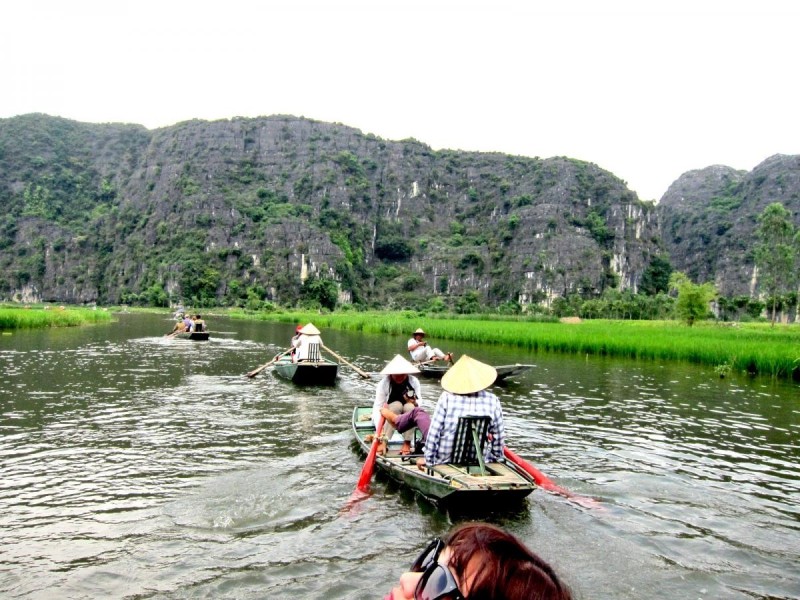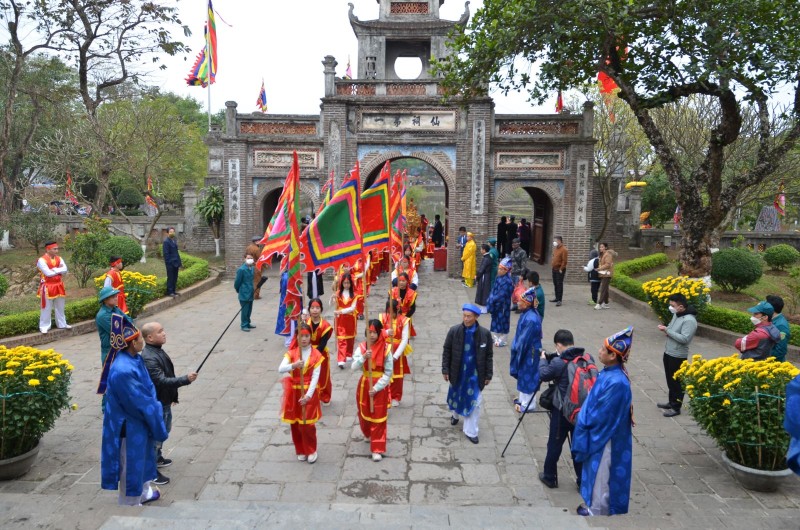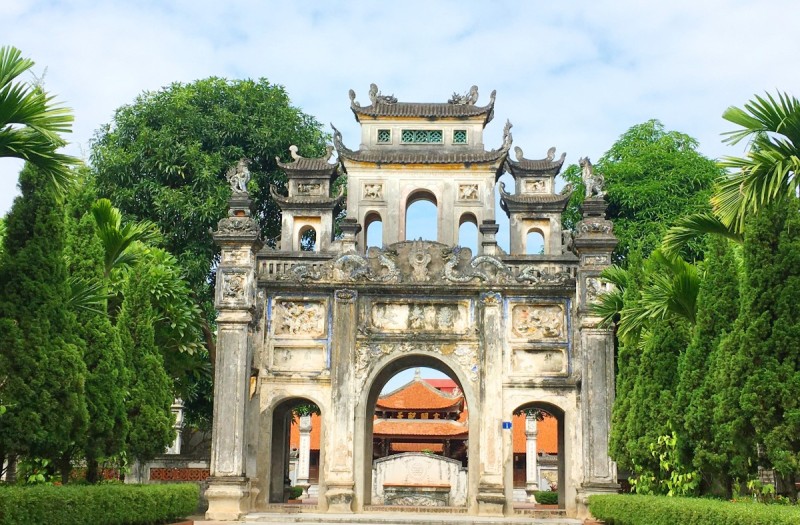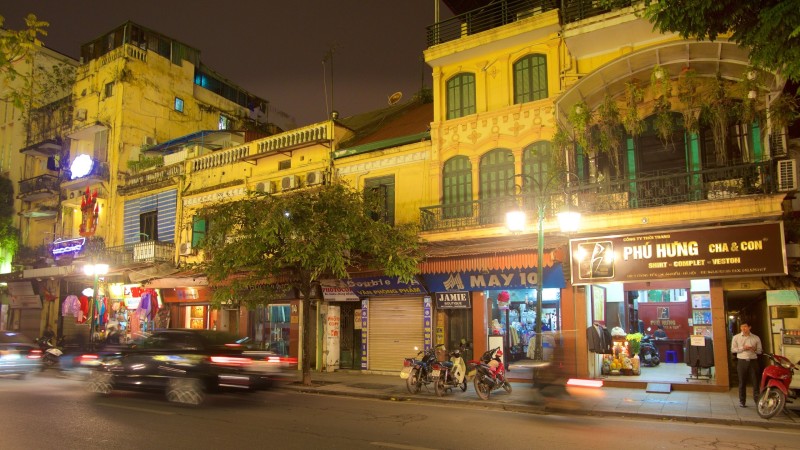Ba Dinh Square Hanoi: History, Visitor Guide & Things to Do
Ba Dinh Square Hanoi serves as Vietnam’s historic cultural and political center, where the country’s Declaration of Independence was proclaimed in 1945. Visitors can explore iconic landmarks such as the Ho Chi Minh Mausoleum and experience traditional flag ceremonies in a setting rich with national significance.

Introduction to Ba Dinh Square
Ba Dinh Square Hanoi stands as one of Vietnam’s most iconic cultural and political landmarks. Located in the heart of Hanoi, this vast square has witnessed pivotal moments in the nation's history. It serves as a symbol of national pride and unity, drawing visitors eager to explore its significance and beauty. Rich in heritage, Ba Dinh Square offers a unique glimpse into Vietnam’s journey toward independence and cultural identity.
As you begin your journey at Ba Dinh Square Hanoi, you will be immersed in a space that blends solemnity with vibrant local life. From monumental architecture to daily ceremonies, the square invites you to connect with Vietnam’s past and present.
Discover the landmarks that define this historic space and the stories they tell as you explore the cultural heart of Hanoi.
Plan your visit to Ba Dinh Square Hanoi to experience the profound history and vibrant culture that make this site truly unforgettable.
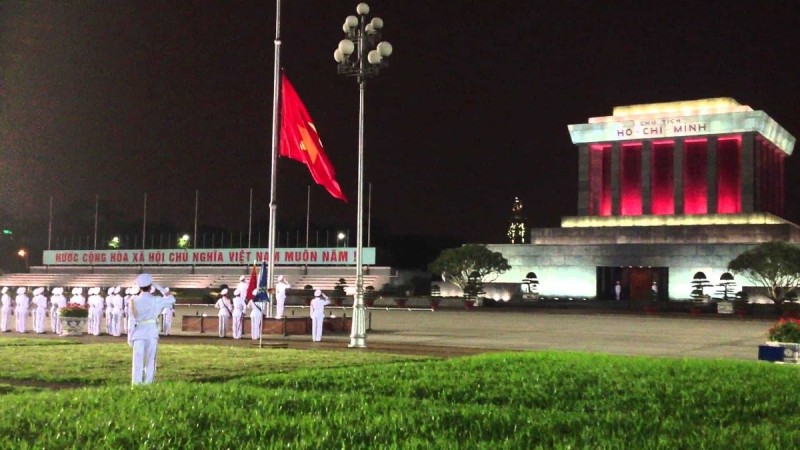
Overview of Ba Dinh Square
Ba Dinh Square is centrally located in Hanoi and functions as a significant cultural and political hub. This expansive open space is home to several important landmarks that represent Vietnam’s national identity and historic milestones. Surrounded by government buildings and monuments, the square serves as the backdrop for official ceremonies and public gatherings.
The layout of Ba Dinh Square reflects its importance, with a design that accommodates both grand events and everyday visitors. Its position within Hanoi’s cityscape highlights the blend of modern life and deep-rooted traditions.
Visitors can appreciate the political and cultural weight the square carries while enjoying the peaceful atmosphere it offers amid the bustling city.
Explore Ba Dinh Square to understand why it remains a central point of pride for Hanoi and Vietnam.
Geographic location and significance in Hanoi
This section details the physical location of Ba Dinh Square and its cultural importance within Hanoi. Situated near the city center, the square occupies a prominent place in Vietnam’s political landscape. Its proximity to major government offices underscores its role as a hub for national events and ceremonies.
- Location: Central Hanoi, close to Hoan Kiem Lake and the Old Quarter
- Accessibility: Easily reachable via public transport and walking routes
- Surroundings: Flanked by important landmarks such as the Presidential Palace and the Ho Chi Minh Mausoleum
- Cultural importance: Recognized as the heart of Vietnam’s political and cultural activities
Together, these aspects emphasize why Ba Dinh Square is a key destination for visitors wanting to connect with Vietnamese history and culture.
Plan your visit to explore the geographic and symbolic significance of Ba Dinh Square Hanoi.
Role as a cultural and political center of Vietnam
As a major national symbol, Ba Dinh Square embodies Vietnam’s cultural identity and political heritage. It is the site where the country’s independence was declared and where national ceremonies continue to take place, marking it as a living monument of Vietnam’s resilience and unity.
- National symbol: Site of historic events such as the 1945 Declaration of Independence
- Political hub: Venue for official ceremonies and government activities
- Cultural heart: Hosts cultural festivals and public commemorations
- Symbolism: Represents national pride and unity across generations
Visitors to Ba Dinh Square Hanoi gain insight into the political and cultural forces shaping Vietnam’s past and present.
Experience the profound significance of Ba Dinh Square as you explore its role in Vietnam’s history and culture.
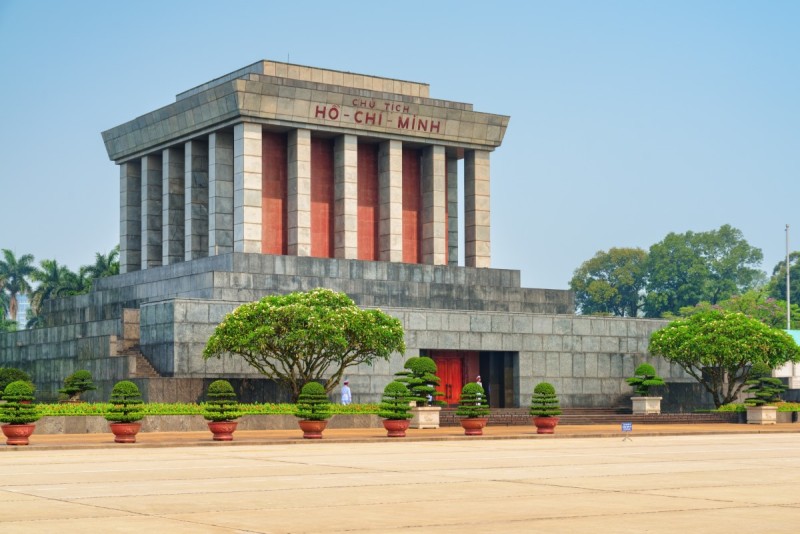
Importance in Vietnamese history and national identity
Ba Dinh Square Hanoi holds a central place in the historical and national identity of Vietnam. This site has witnessed pivotal moments that shaped the country’s path to independence and unity. It symbolizes the resilience and spirit of the Vietnamese people, reflecting their revolutionary heritage and cultural pride.
Significant events at Ba Dinh Square highlight its role as a beacon of Vietnamese independence and patriotism. The square’s importance extends beyond its physical space, embodying the national identity through its associations with revolutionary history and ongoing ceremonies.
Understanding the deep-rooted significance of Ba Dinh Square Hanoi enriches your visit and appreciation of Vietnam’s cultural and political journey.
Plan your exploration of Ba Dinh Square Hanoi to connect with the heart of Vietnamese history and national pride.
Connection to the Ba Dinh Uprising
The name Ba Dinh Square honors the Ba Dinh Uprising, a significant anti-colonial movement against French rule. This rebellion marks an early chapter in Vietnam’s long struggle for sovereignty and self-determination.
- Historical context: The uprising occurred in the late 19th century as a response to colonial oppression
- Legacy: It symbolizes Vietnamese resistance and the fight for freedom
- Cultural memory: The square’s name preserves the spirit and memory of this pivotal event
This connection gives Ba Dinh Square profound historical depth, linking it directly to the nation’s enduring fight for independence.
Discover the roots of Ba Dinh Square through the legacy of the Ba Dinh Uprising and appreciate its role in Vietnamese history.
Site of Vietnam’s Declaration of Independence in 1945
On September 2, 1945, Ba Dinh Square became the historic stage for Vietnam’s Declaration of Independence. Ho Chi Minh proclaimed the birth of the Democratic Republic of Vietnam here, marking a turning point in the nation’s history.
- Event significance: The declaration ended French colonial rule and Japanese occupation
- Symbolism: It represents the formal birth of modern Vietnam as a sovereign nation
- Commemorations: The site hosts annual national celebrations honoring this milestone
Visiting Ba Dinh Square allows you to stand where history was made and feel the weight of Vietnam’s revolutionary spirit.
Experience the profound importance of Ba Dinh Square as the site of Vietnam’s Declaration of Independence in 1945.
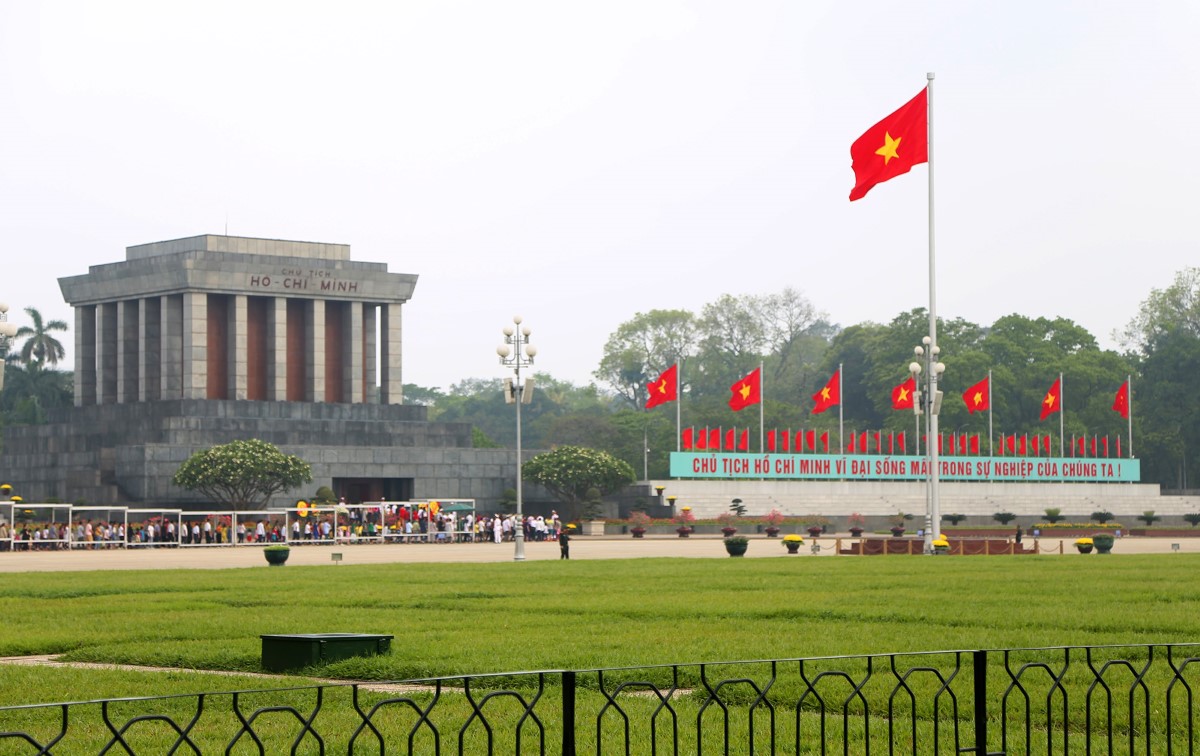
Unique features that distinguish Ba Dinh Square
Ba Dinh Square stands as a monumental public square in Vietnam, renowned for its impressive architectural design and deep cultural symbolism. The square’s vast size and layout offer visitors a unique spatial experience, framed by iconic landmarks that reflect Vietnam’s national identity.
Its monumental design creates a powerful sense of place. The expansive open space accommodates large public gatherings and official ceremonies, making it a focal point for national celebrations. Visitors can appreciate the deliberate symmetry and scale that emphasize the square’s political and cultural significance.
Notable Ba Dinh Square landmarks include the grand Ho Chi Minh Mausoleum, which commands attention with its solemn and dignified architecture. Surrounding the square are the Presidential Palace and the historic One Pillar Pagoda, each adding layers of historical depth and visual contrast.
The square’s architecture and symbolic elements blend traditional Vietnamese motifs with modern influences, making Ba Dinh Square a distinctive cultural landmark. Its layout not only supports its ceremonial functions but also invites visitors to explore the history embedded in its surroundings.
Experience the grandeur of Ba Dinh Square and explore its unique architecture and landmarks to gain a deeper appreciation of Vietnam’s cultural heritage.
Size, layout, and surrounding landmarks
Ba Dinh Square is one of the largest public squares in Vietnam, covering approximately 12 hectares. Its spacious layout accommodates vast crowds during major national events, emphasizing its importance as a political and cultural hub.
- Size: The square spans around 12 hectares, making it a prominent and expansive urban space.
- Layout: Designed with symmetrical precision, the square is divided into formal sections that facilitate ceremonial activities.
- Ho Chi Minh Mausoleum: Centrally located, this mausoleum serves as the focal point with its imposing, solemn structure.
- Presidential Palace: Situated on the northern edge, the palace adds historical grandeur and political significance.
- One Pillar Pagoda: Located nearby, this ancient pagoda offers a striking cultural contrast within the modern layout.
These features combine to create a harmonious environment that balances monumental architecture with cultural heritage. The square’s size and layout invite visitors to take in its full scale and explore its surroundings thoughtfully.
Plan your visit to Ba Dinh Square to experience the impressive scale and explore the nearby landmarks that define Hanoi’s historic heart.
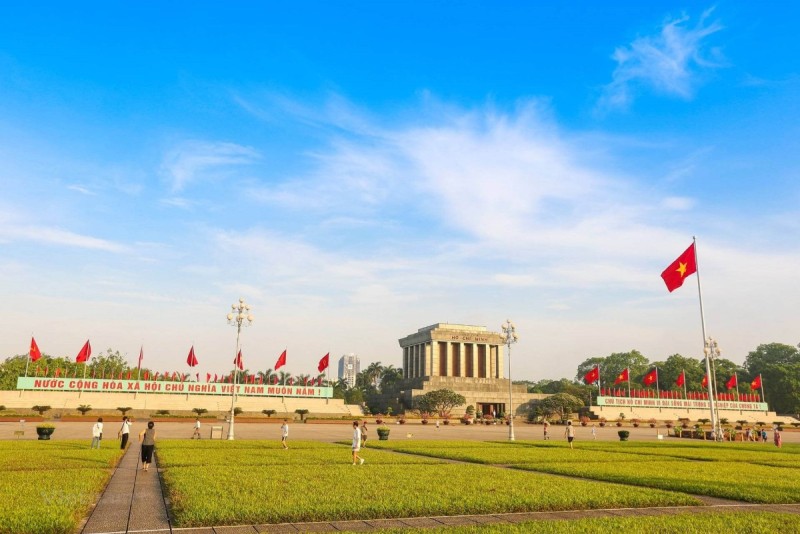
Historical Significance of Ba Dinh Square
Ba Dinh Square Hanoi holds a central place in Vietnam’s history and national identity. It is where critical moments unfolded that shaped the country’s path to independence and sovereignty. This vast square serves not only as a monumental space for political ceremonies but also as a living symbol of Vietnamese resilience and unity.
The square witnessed the Declaration of Independence in 1945 by Ho Chi Minh, marking a pivotal break from colonial rule. Over the decades, Ba Dinh Square has remained a site of national pride, hosting numerous monuments and events that commemorate Vietnam’s struggle and achievements.
Architectural developments after independence have preserved the square’s solemn dignity while integrating modern elements that reflect Vietnam’s progress. Preservation efforts continue to safeguard its historic monuments, ensuring Ba Dinh Square remains a beacon of cultural heritage for future generations.
Discover the profound history at Ba Dinh Square Hanoi and explore the monuments that honor Vietnam’s enduring spirit.
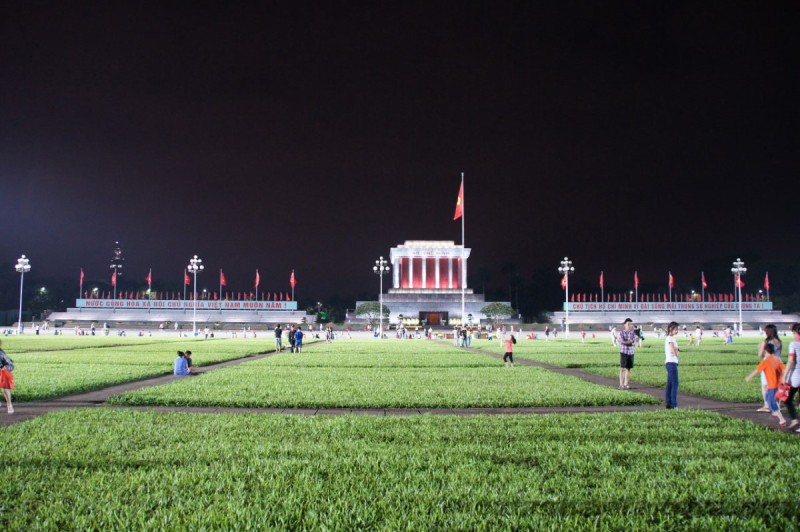
The Ba Dinh Uprising and its legacy
The Ba Dinh Uprising was a significant anti-colonial movement that laid the groundwork for Vietnam’s later independence. This uprising symbolized early resistance against foreign rule and demonstrated the resilience of the Vietnamese people.
The rebellion’s legacy is seen in its lasting influence on subsequent movements striving for national freedom. It inspired a generation to continue the struggle against colonial powers and helped shape Vietnam’s path to sovereignty.
- The Ba Dinh Uprising occurred during a turbulent period of colonial oppression.
- It mobilized local communities to resist foreign control.
- The uprising’s impact extended beyond its immediate outcome, inspiring future revolutionary efforts.
Understanding the Ba Dinh Uprising offers vital insight into Vietnam’s history and the enduring spirit behind Ba Dinh Square.
Plan your visit to Ba Dinh Square to connect with the powerful legacy of the Ba Dinh Uprising.
Background and historical context of the uprising
The Ba Dinh Uprising emerged amid growing tensions under colonial Vietnam’s harsh governance. It reflected widespread dissatisfaction and the desire for self-determination.
- Political repression and economic exploitation fueled unrest.
- Vietnamese independence movements were gaining momentum.
- Local leaders organized resistance efforts to challenge colonial authorities.
These conditions set the stage for the Ba Dinh Rebellion, marking a critical chapter in Vietnam’s quest for freedom.
Learn more about the Ba Dinh Uprising background to appreciate its role in Vietnam’s historic journey.
Impact on Vietnamese resistance movements
The Ba Dinh Uprising significantly influenced later anti-colonial struggles and the broader Vietnamese resistance movement.
- It provided a model of organized resistance against colonial forces.
- Inspired subsequent revolutionary groups to intensify their efforts.
- Helped unify various factions around the goal of independence.
This lasting impact underscores the uprising’s importance in Vietnam’s revolutionary history and cultural memory.
Explore the Ba Dinh Uprising influence to better understand Vietnam’s path to independence.
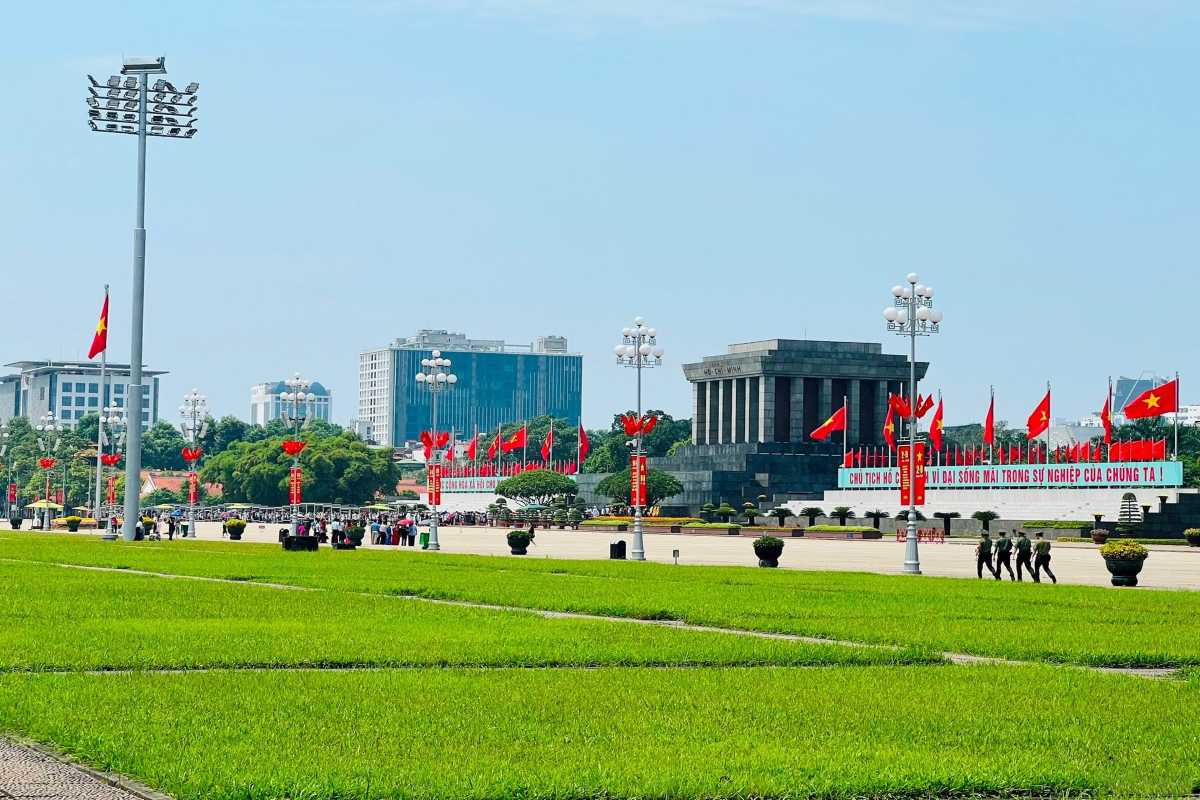
Ho Chi Minh’s Declaration of Independence
The Ho Chi Minh Declaration of Independence, proclaimed at Ba Dinh Square in 1945, marked a defining moment in Vietnam’s revolutionary history. This historic event announced the end of colonial rule and the birth of the Democratic Republic of Vietnam, affirming the country’s sovereign identity.
Ho Chi Minh’s speech articulated a vision of national unity and freedom, inspiring generations to uphold these ideals. The declaration at Ba Dinh Square remains a symbol of resilience and hope, embodying the spirit of Vietnamese independence.
Visitors to Ba Dinh Square can feel the powerful legacy of this event that shaped modern Vietnam’s identity and destiny.
Plan your visit to Ba Dinh Square to witness the site where Ho Chi Minh’s historic declaration changed Vietnam forever.
Details of the event and its symbolism
The declaration speech took place on September 2, 1945, at Ba Dinh Square before a large gathering of citizens and revolutionary leaders. Ho Chi Minh drew upon universal ideals of freedom and justice to proclaim Vietnam’s independence.
- The speech referenced the U.S. Declaration of Independence, linking Vietnam’s struggle to global movements for liberty.
- Ba Dinh Square served as a symbolic setting, emphasizing national unity and sovereignty.
- The event marked the official beginning of Vietnam’s self-governance after years of colonial domination.
This declaration remains a profound milestone, celebrated annually and remembered as the birth of modern Vietnam’s nationhood.
Explore the Vietnam independence speech details to deepen your understanding of this historic moment.
Commemorative monuments and ceremonies
Ba Dinh Square is home to several monuments honoring the independence declaration and hosts ongoing ceremonies that celebrate Vietnam’s national identity.
- Ba Dinh Square monuments include statues and memorials dedicated to revolutionary leaders and historic events.
- Daily flag raising and lowering ceremonies are conducted with solemn respect at the square.
- National holidays such as Independence Day feature large-scale commemorations at Ba Dinh Square.
These traditions preserve the spirit of the 1945 declaration and connect visitors with Vietnam’s enduring patriotic heritage.
Join the flag ceremony Ba Dinh Square to experience a meaningful tribute to Vietnam’s independence.
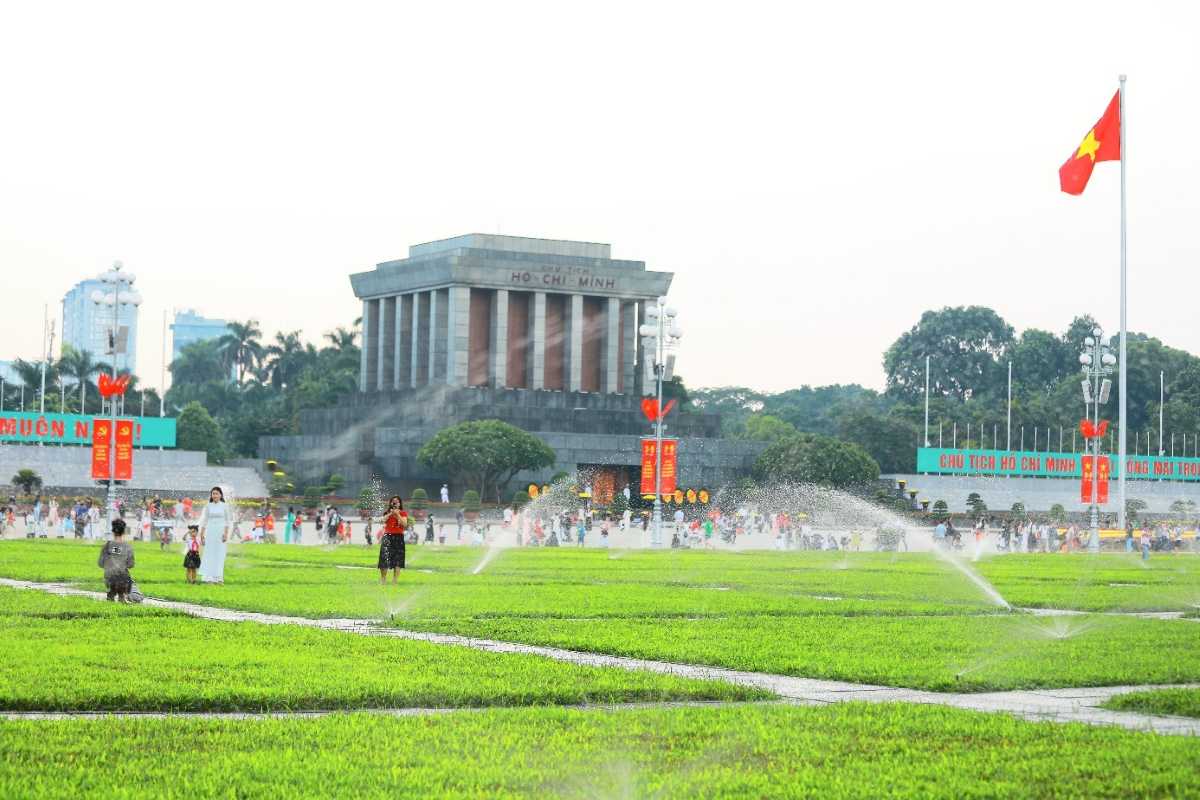
Evolution of Ba Dinh Square through the decades
Ba Dinh Square architectural history reveals a dynamic evolution reflecting Vietnam’s political changes and urban development. Since independence, the square has grown from a symbol of revolutionary triumph to a carefully preserved cultural landmark that honors the past while embracing modernity.
The square’s evolution traces architectural updates and cultural shifts that highlight Hanoi’s heritage preservation efforts. Visitors can observe how Ba Dinh Square maintains its solemn character amid the city’s ongoing transformation.
Explore Ba Dinh Square evolution to appreciate how history and urban progress intertwine in this iconic public space.
Architectural developments post-independence
Following Vietnam’s independence, Ba Dinh Square underwent several major architectural projects that shaped its current form. The design blends French colonial influences with modern Vietnamese styles, creating a unique aesthetic.
- The Ho Chi Minh Mausoleum was constructed with austere, monumental features reflecting Vietnamese reverence.
- Surrounding buildings showcase French colonial architecture adapted for government use.
- Later additions incorporated Vietnamese modern architectural elements, symbolizing progress and tradition.
These developments illustrate the square’s role as both a historical monument and a living part of Hanoi’s architectural landscape.
Discover more about post-independence architecture Ba Dinh Square to see how history shapes design.
Preservation and restoration efforts
Efforts to preserve Ba Dinh Square focus on maintaining its cultural significance while adapting to modern needs.
- Regular restoration projects protect the structural integrity of monuments and green spaces.
- Conservation policies ensure the square’s historical authenticity remains intact.
- Sustainable tourism initiatives encourage responsible visitor behavior to minimize wear.
These activities help safeguard Ba Dinh Square for future generations while allowing visitors to experience its rich heritage respectfully.
Support Ba Dinh Square preservation efforts by visiting mindfully and respecting local guidelines.
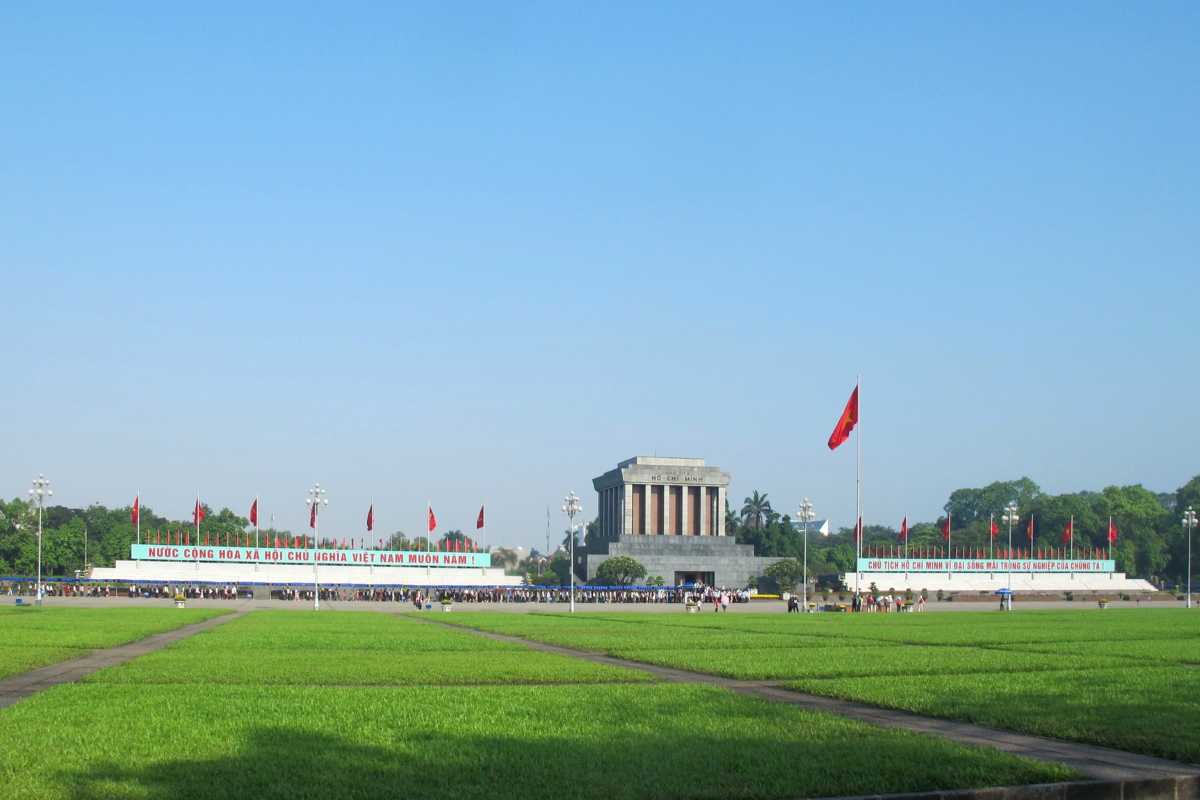
Key Attractions within Ba Dinh Square
Ba Dinh Square Hanoi is home to several key attractions that offer visitors a rich blend of history, culture, and architecture. These sites provide insight into Vietnam’s heritage and are essential stops for anyone exploring the square.
Visitors can discover iconic landmarks like the Ho Chi Minh Mausoleum, the One Pillar Pagoda, and the Presidential Palace Hanoi. Each offers unique stories and features that deepen understanding of Vietnam’s national identity. Practical visitor tips help ensure a smooth and rewarding experience.
Plan your visit to Ba Dinh Square Hanoi and explore its top tourist attractions for an unforgettable journey into Vietnamese history.

Ho Chi Minh Mausoleum
The Ho Chi Minh Mausoleum is a solemn monument dedicated to Vietnam’s founding leader. Its architectural design reflects a blend of Vietnamese and Soviet influences, embodying respect and national pride.
Visitors should be prepared for strict protocols to ensure a respectful atmosphere. Entry requires adherence to dress codes and quiet behavior, making it important to plan your visit accordingly.
- The mausoleum’s granite facade and austere lines symbolize strength and endurance.
- Photography inside the mausoleum is prohibited to maintain reverence.
- Visitor tips include arriving early to avoid long queues and following security checks smoothly.
Experience the profound significance of the Ho Chi Minh Mausoleum during your Ba Dinh Square visit.
Architectural design and symbolism
The Ho Chi Minh Mausoleum’s design incorporates traditional Vietnamese elements with socialist realism, reflecting both cultural heritage and political ideology.
- The mausoleum’s rectangular shape conveys solemnity and permanence.
- Use of gray granite symbolizes strength and endurance.
- The red flags surrounding the structure represent the revolutionary spirit.
- Interior layout is simple, focusing attention on Ho Chi Minh’s preserved body.
These design choices enrich visitor appreciation of the mausoleum’s cultural and political symbolism.
Learn more about Ho Chi Minh Mausoleum architecture to fully grasp its significance.
Visitor protocols and tips for touring
Visitors to the Ho Chi Minh Mausoleum must follow strict protocols to maintain the site’s dignity.
- Dress modestly, avoiding shorts and sleeveless tops.
- Maintain silence inside the mausoleum.
- Follow instructions from security personnel and respect queue order.
- Photography and mobile phone use inside are prohibited.
Adhering to these rules ensures a respectful visit for all guests.
Use these Ho Chi Minh Mausoleum visitor tips to prepare for a smooth and meaningful tour.
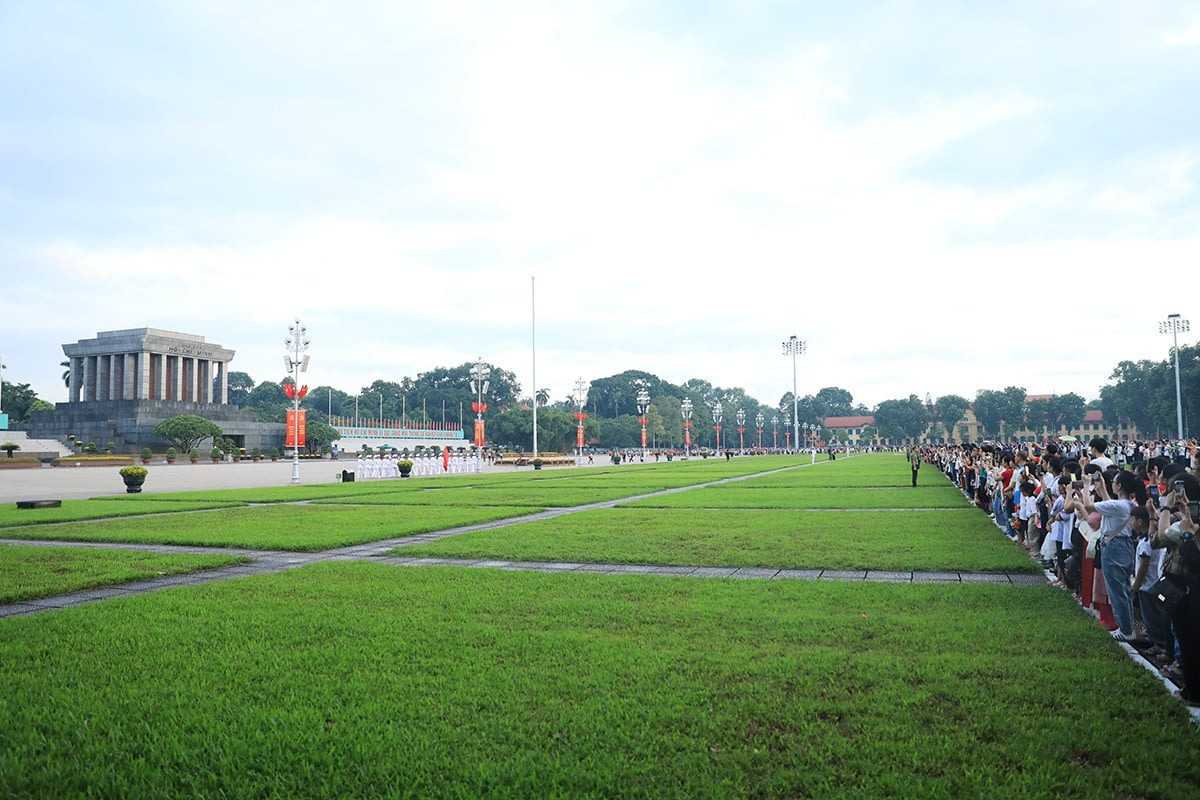
One Pillar Pagoda
The One Pillar Pagoda is a unique Buddhist temple famous for its architectural design and cultural symbolism. Built over a single stone pillar, it represents a lotus blossom, a symbol of purity in Vietnamese culture.
This pagoda holds deep spiritual significance and is an important pilgrimage site for many visitors. Understanding its history and guidelines helps you appreciate this iconic monument fully.
Plan your visit to the One Pillar Pagoda to experience its tranquil beauty and cultural richness firsthand.
Historical background and cultural importance
The One Pillar Pagoda dates back to the 11th century and was originally constructed under Emperor Lý Thái Tông. It symbolizes a lotus flower rising from the water, embodying purity and enlightenment in Buddhist belief.
- It was built as a response to the emperor’s prayer for a son.
- The pagoda’s unique single-pillar design distinguishes it from traditional temple architecture.
- Over centuries, it has been restored multiple times, preserving its cultural significance.
This heritage makes the One Pillar Pagoda a treasured spiritual and historical landmark in Vietnam.
Learn about One Pillar Pagoda history and its role in Vietnamese cultural heritage.
Visiting hours and photography guidelines
Visitors to the One Pillar Pagoda should be aware of practical details to plan their visit effectively.
- Visiting hours are generally from early morning until late afternoon daily.
- Modest attire is recommended due to the site’s religious nature.
- Photography is allowed but respectful behavior and restrictions near altars must be observed.
- Avoid using flash or loud noises to maintain the serene atmosphere.
Following these guidelines ensures a respectful and enjoyable experience.
Use these One Pillar Pagoda visiting hours and photography tips to make the most of your visit.
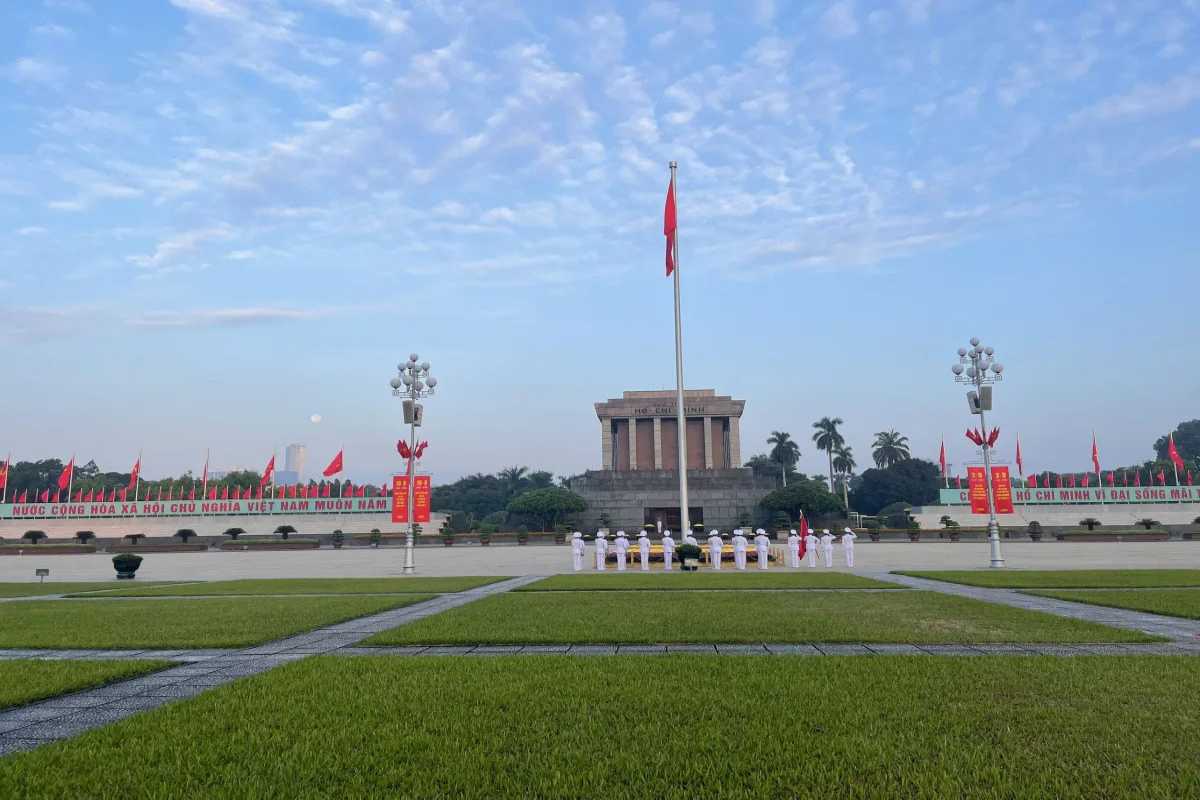
Presidential Palace and surrounding buildings
The Presidential Palace Hanoi stands as a striking example of French colonial architecture and serves as an important government site. While the palace itself is not open to the public, visitors can admire its grand façade and surrounding gardens from designated external viewing points.
The complex includes several historic buildings used for official functions, reflecting Vietnam’s political heritage and colonial past. Understanding the palace’s role enhances appreciation for its architectural beauty and national significance.
Plan your visit to the Presidential Palace Hanoi to enjoy its impressive exterior and learn about its place in Vietnam’s history.
Historical role and current use
The Presidential Palace Hanoi was constructed during the French colonial period as the residence of the French Governor-General. Since independence, it has been used for official state functions and government receptions.
- The palace’s architecture blends French Renaissance style with Vietnamese influences.
- It is surrounded by lush gardens designed to provide a tranquil setting.
- Though entry is restricted, the palace remains a symbol of Vietnam’s political continuity.
This historical context provides insight into the palace’s importance beyond its physical presence.
Learn about the Presidential Palace historical role and its current governmental function.
External viewing points for tourists
Visitors can view the Presidential Palace Hanoi safely and respectfully from several external points nearby.
- The main viewing area is across the street, offering a full view of the palace façade.
- Walking paths around the nearby gardens provide picturesque vantage points.
- Guided tours often include stops for photo opportunities outside the palace grounds.
- Visitors should respect restricted areas and avoid crossing official boundaries.
These points allow for an enjoyable visit while preserving the palace’s security and dignity.
Use these Presidential Palace external views and tourist viewing points to plan your visit effectively.
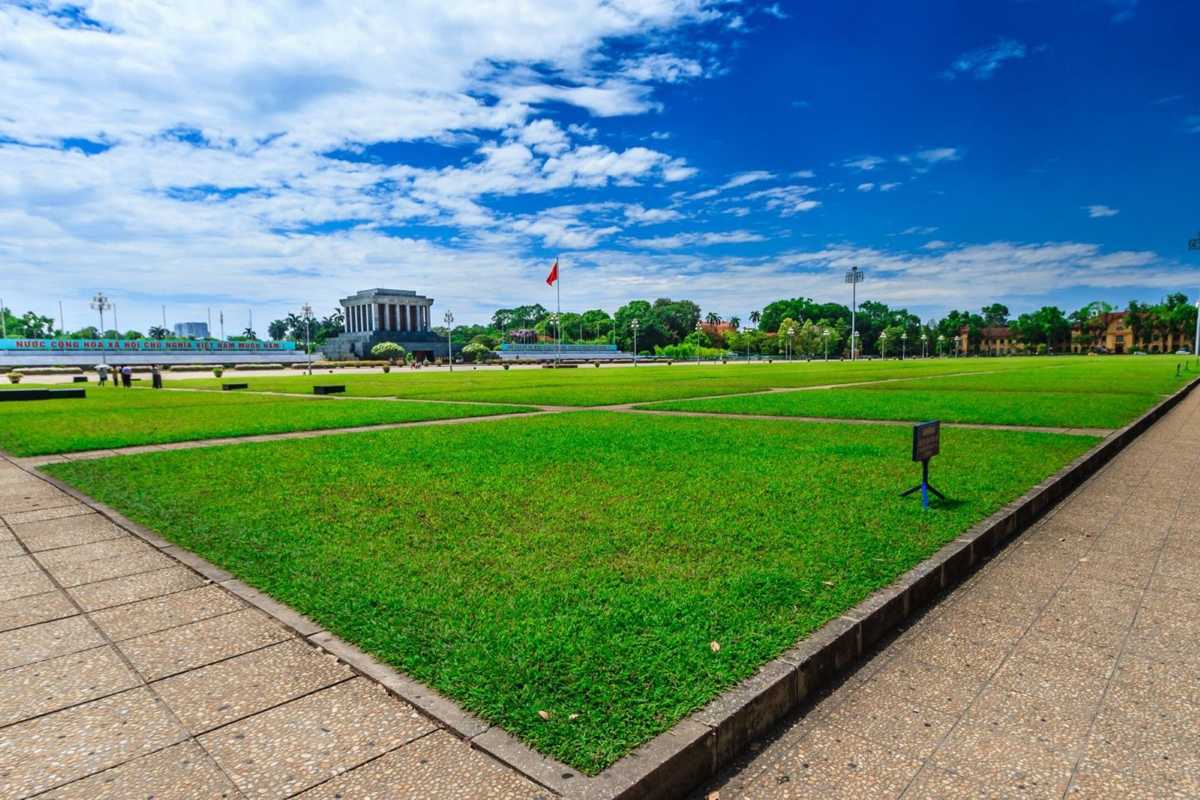
Ho Chi Minh Museum
The Ho Chi Minh Museum offers a comprehensive look into the life and legacy of Vietnam’s revolutionary leader. The museum presents a rich collection of exhibits that chronicle his journey and Vietnam’s struggle for independence.
Visitors can expect an informative and engaging experience that deepens understanding of Vietnamese history and culture. Clear admission details and visitor amenities help plan a comfortable visit.
Explore the Ho Chi Minh Museum to connect with Vietnam’s heritage and honor its iconic figure.
Exhibits overview
The Ho Chi Minh Museum houses a diverse collection that highlights key moments of the leader’s life and Vietnam’s revolutionary history.
- Displays include personal artifacts, photographs, and historical documents.
- Exhibits showcase Vietnam’s cultural heritage alongside revolutionary milestones.
- Interactive displays provide educational insights into Ho Chi Minh’s philosophies.
- Special exhibitions rotate periodically, offering fresh perspectives.
These highlights make the museum a valuable stop for history enthusiasts and curious travelers alike.
Learn about Ho Chi Minh Museum exhibits to better appreciate the museum’s scope.
Admission details and visitor experience
Planning your visit to the Ho Chi Minh Museum is easy with clear information on pricing and hours.
- Admission is generally free, making it accessible to all visitors.
- The museum is open daily from morning to late afternoon.
- Facilities include guided tours and informational brochures.
- Visitor amenities feature rest areas and accessible pathways.
This practical information helps ensure a smooth and enjoyable museum experience.
Use the Ho Chi Minh Museum admission and visitor information to prepare for your visit.
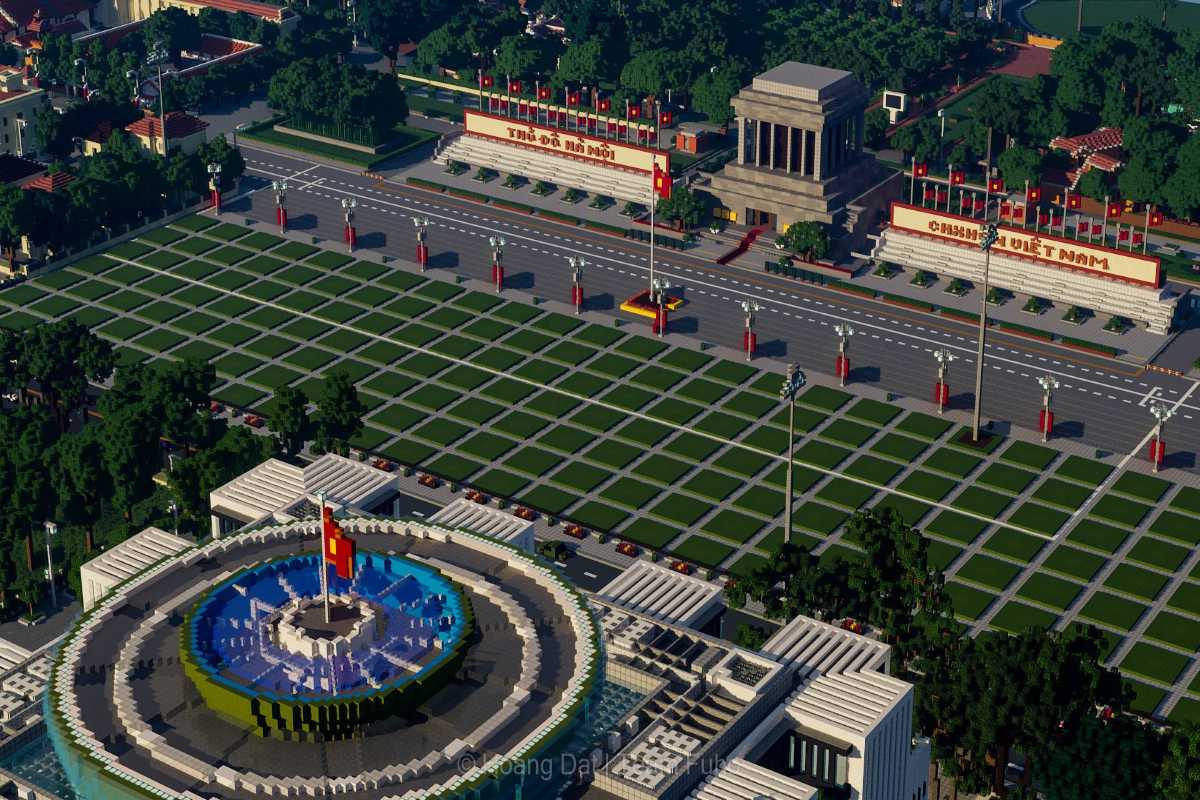
Practical Visitor Information
Ba Dinh Square Hanoi offers a range of practical considerations to help you plan your visit with ease. From access routes to opening hours and entry fees, knowing these details ensures a smooth and enjoyable experience.
Whether you are using public transportation, taxis, or prefer walking, clear options are available to reach Ba Dinh Square comfortably. Understanding visitor facilities and timing also helps avoid crowds and maximize your visit.
Prepare well with this essential information to make the most of your time at Ba Dinh Square Hanoi.
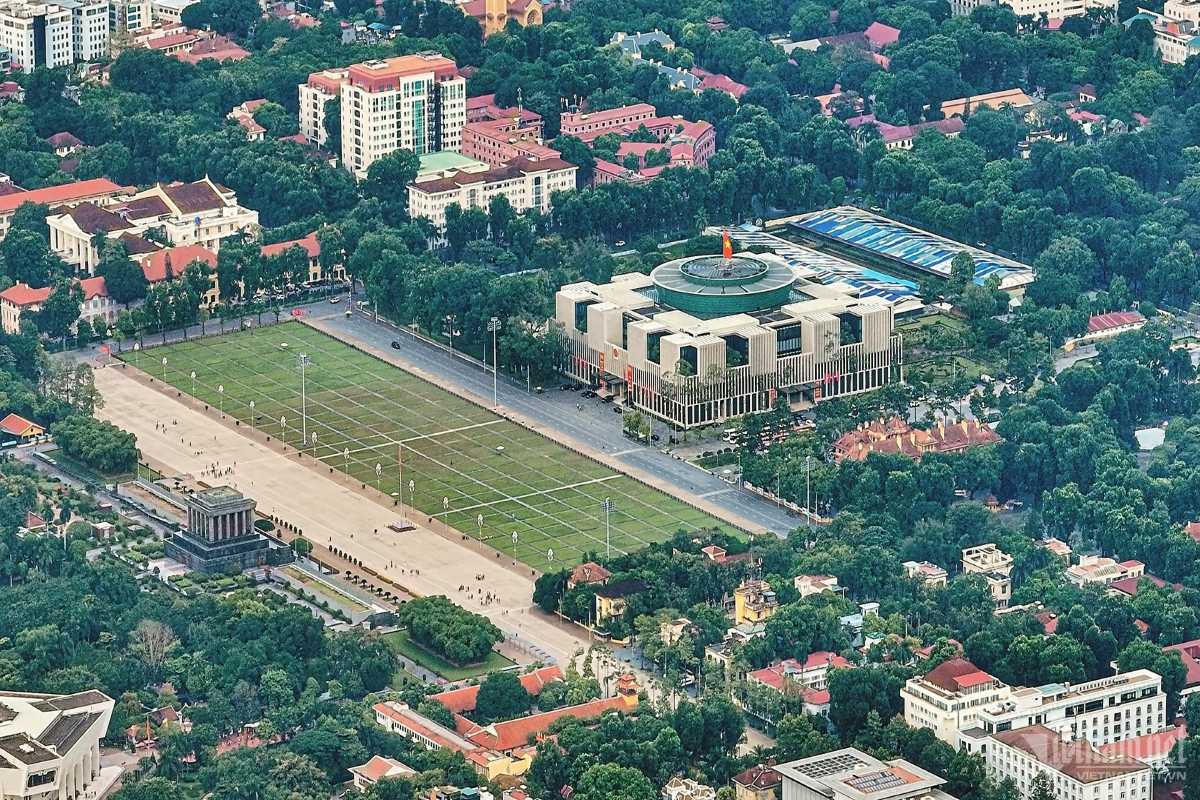
How to get to Ba Dinh Square
Knowing how to get to Ba Dinh Square is key for a hassle-free visit. The square is easily accessible via multiple transport options in Hanoi, offering flexibility to suit your preferences and schedule.
Public transportation connects Ba Dinh Square with many parts of the city, while taxis and motorbikes provide quick and convenient rides. For those who enjoy active travel, walking or cycling from nearby neighborhoods is also a pleasant choice.
- Use Hanoi’s bus lines, such as Bus #9, #22, and #34, which stop close to Ba Dinh Square.
- Taxi and ride-hailing services like Grab operate widely and are easy to arrange.
- Walking or cycling from Hanoi Old Quarter takes about 20–30 minutes along scenic routes.
Explore these options to choose the best way to reach Ba Dinh Square for your visit.
Plan your route carefully to Ba Dinh Square to start your trip smoothly and confidently.
Public transportation options (bus routes, taxi, motorbike)
Several public transportation options make reaching Ba Dinh Square convenient and affordable.
- Bus lines #9, #22, and #34 serve stops near Ba Dinh Square, connecting with major city areas.
- Taxis are widely available throughout Hanoi, providing direct and flexible travel.
- Motorbike taxis offer a quick, cost-effective alternative for solo travelers.
- Purchase bus tickets onboard or use transport cards for easy access.
These choices ensure visitors can tailor their transit to their needs and comfort.
Use Ba Dinh Square public transportation options to navigate Hanoi efficiently.
Walking and cycling routes from Hanoi Old Quarter
For those who prefer active travel, walking and cycling routes from Hanoi Old Quarter to Ba Dinh Square provide a scenic and healthy option.
- Walking takes approximately 20 to 30 minutes via quiet streets and cultural landmarks.
- Cycling routes follow pedestrian-friendly roads with low traffic for safety.
- Along the way, you can enjoy views of Hanoi’s French Quarter architecture and local life.
- Ensure to wear comfortable shoes and stay hydrated during warmer months.
These routes offer an immersive way to experience Hanoi’s charm on the way to Ba Dinh Square.
Discover Ba Dinh Square walking routes and cycling options to enjoy a memorable journey.
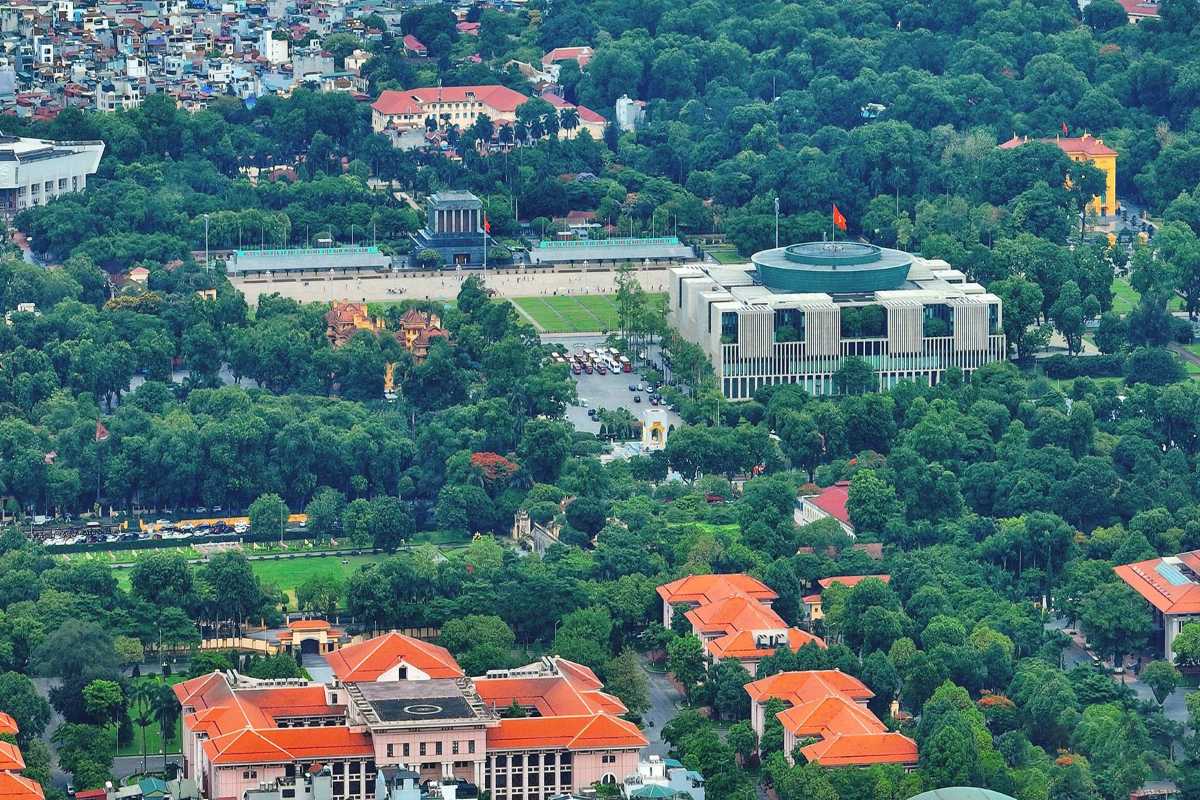
Opening hours and best times to visit
Knowing the Ba Dinh Square opening hours helps you plan a visit that fits your schedule and maximizes your experience. The square is generally open from early morning until evening, allowing visitors plenty of time to explore its landmarks.
The best time to visit Ba Dinh Square is during cooler months and on weekdays when crowds are lighter. Timing your visit to coincide with the flag raising ceremony adds a special cultural dimension.
- Ba Dinh Square typically opens around 6:00 AM and closes by 9:00 PM.
- The flag raising ceremony takes place daily at sunrise, and the lowering ceremony at sunset.
- Early morning visits offer peaceful surroundings and better photo opportunities.
- Avoid major Vietnamese holidays if you prefer a quieter experience.
Plan your visit with Ba Dinh Square opening hours in mind to enjoy a serene and meaningful trip.
Daily schedule including flag raising and lowering ceremonies
The flag ceremonies at Ba Dinh Square are a highlight for many visitors and are conducted with great respect and tradition.
- The flag raising ceremony begins at sunrise and lasts about 15 minutes.
- The flag lowering ceremony occurs at sunset, also lasting approximately 15 minutes.
- Visitors should arrive early to find a good viewing spot.
- Photography is allowed, but silence is requested to maintain the solemn atmosphere.
These ceremonies provide a unique opportunity to witness Vietnam’s national pride in action.
Attend the Ba Dinh Square flag ceremony to experience a meaningful cultural ritual.
Seasonal weather considerations and crowd management
Understanding Hanoi’s seasonal weather and peak tourism periods helps you plan a comfortable visit to Ba Dinh Square.
- The best months to visit are from October to April, with cooler, drier weather.
- Summer months bring heat and heavy rain, which may affect outdoor activities.
- Weekdays are generally less crowded, especially early mornings.
- Special holidays and festivals draw larger crowds; plan accordingly.
Being aware of these factors can improve your comfort and enjoyment during the visit.
Use these Ba Dinh Square crowd tips and seasonal visiting advice to make your trip smooth and pleasant.
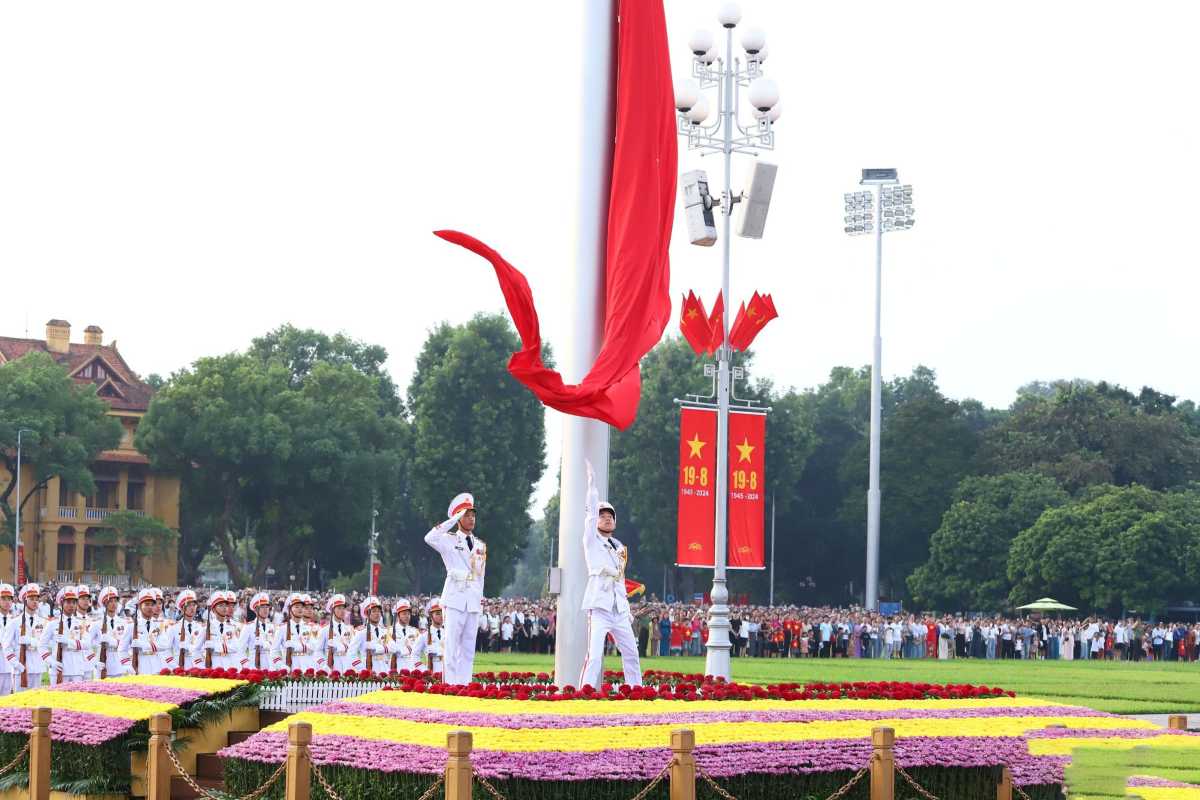
Entry fees and ticketing information
Understanding Ba Dinh Square entry fees is important for planning your visit without surprises. Many parts of the square are freely accessible, allowing visitors to explore outdoor spaces and certain landmarks at no cost. However, some specific attractions within the area require tickets.
Being aware of ticket prices helps you decide which paid sites to include in your itinerary and budget accordingly.
- Access to the main square and surrounding gardens is free for all visitors.
- The Ho Chi Minh Mausoleum and some museums may have entrance fees or specific visiting requirements.
- Ticket prices for paid attractions vary and are generally affordable.
- Discounts may be available for students, seniors, and groups.
Check entry fees ahead of time to plan your Ba Dinh Square visit effectively and make the most of your experience.
Free access areas vs. paid attractions within the square
Ba Dinh Square offers a mix of free and ticketed areas, helping visitors tailor their experience based on interest and budget.
- Free areas include the open square itself, public gardens, and walking paths.
- Paid attractions include the Ho Chi Minh Mausoleum and select museums nearby.
- Admission policies may change during special events or holidays.
- Visitors should verify ticketing details at official information centers or websites.
Understanding this distinction allows you to prioritize your visit and manage time effectively.
Use Ba Dinh Square free areas and paid attractions information to customize your itinerary.
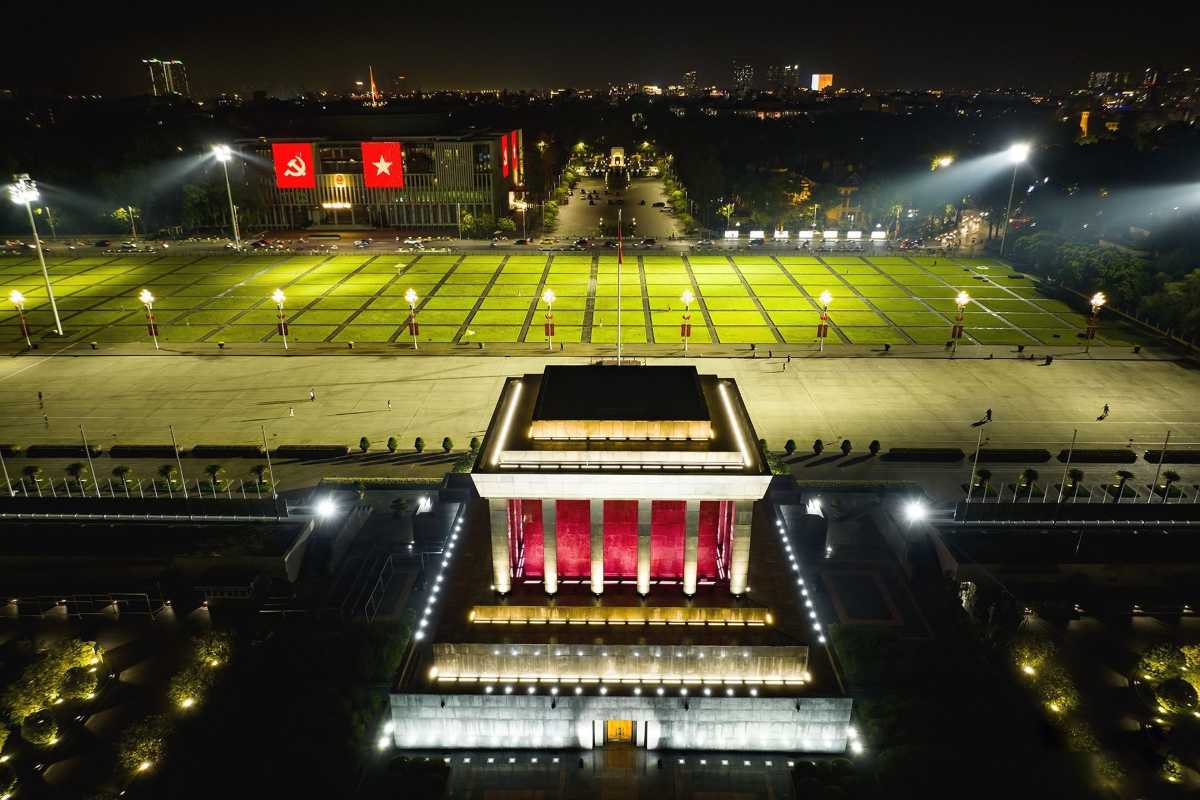
Visitor facilities and accessibility
Ba Dinh Square provides a range of visitor facilities designed to ensure comfort and accessibility for all guests. Whether you require basic amenities or special accommodations, the square is equipped to meet diverse needs.
These facilities enhance the overall experience and make visiting Ba Dinh Square more convenient and welcoming.
Plan ahead by knowing the available visitor facilities and accessibility options at Ba Dinh Square.
Restroom availability and food options nearby
Visitors to Ba Dinh Square have access to essential amenities such as restrooms and nearby dining options for convenience during their visit.
- Public restrooms are located near the main entrances and popular landmarks.
- Several cafes and restaurants are within walking distance, offering local and international cuisine.
- Food vendors provide quick snacks and refreshments around the square.
- Visitors are advised to carry water, especially during warmer months.
These facilities support a comfortable and enjoyable visit to Ba Dinh Square.
Use information on Ba Dinh Square restroom locations and dining near Ba Dinh Square to plan your visit.
Accessibility for people with disabilities
Ba Dinh Square is committed to inclusive tourism and offers several accommodations for visitors with disabilities.
- Wheelchair ramps and accessible pathways are available at key locations.
- Assistance services may be requested in advance through visitor centers.
- Seating areas are designed to accommodate those with mobility challenges.
- Clear signage helps guide disabled visitors throughout the square.
These measures ensure that all travelers can enjoy Ba Dinh Square comfortably and safely.
Learn about Ba Dinh Square accessibility for disabled visitors to prepare your visit accordingly.
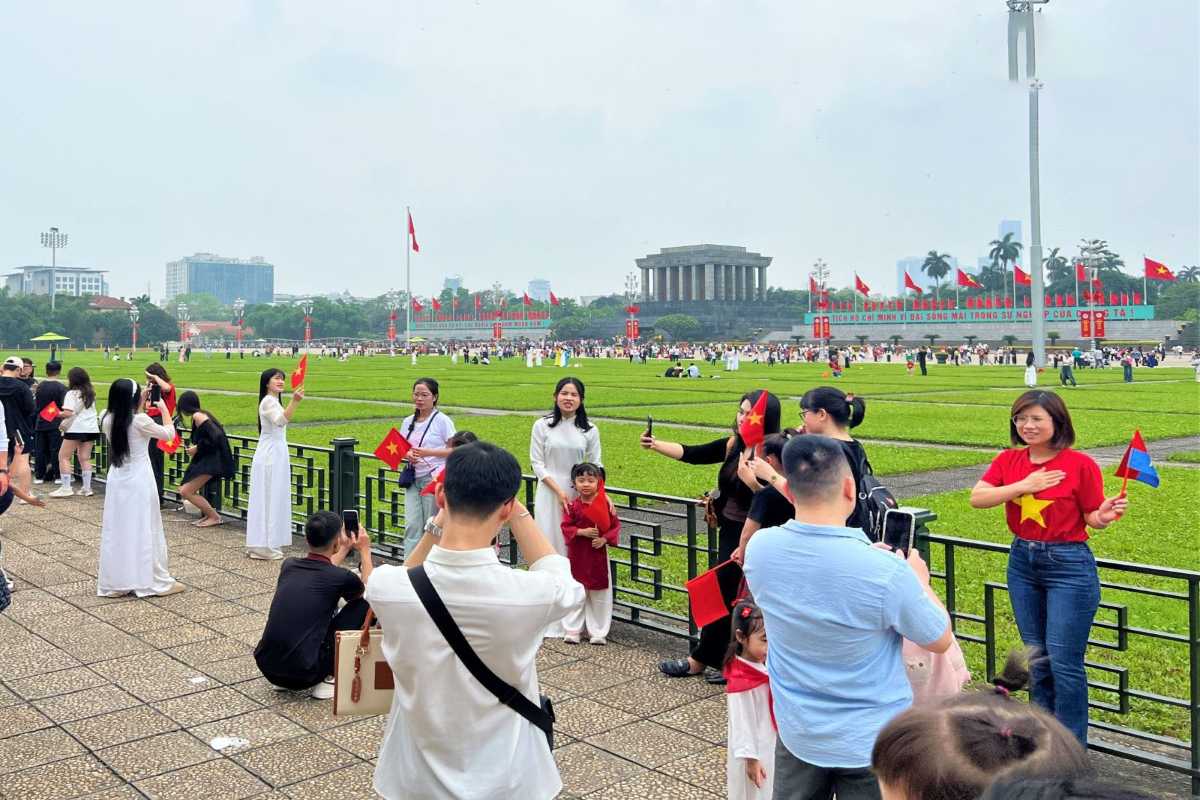
Things to Do at Ba Dinh Square and Nearby
Ba Dinh Square things to do go beyond sightseeing, offering visitors a chance to engage deeply with Vietnam’s rich cultural heritage. From witnessing solemn ceremonies to exploring nearby historic sites, there are numerous activities that enrich your visit.
Participate in or observe national rituals, join walking tours around the square, and capture memorable moments with photography tips tailored for this iconic location. Nearby attractions like the Temple of Literature and Hoa Lo Prison Museum add layers of historical context and cultural exploration.
Plan your itinerary around Ba Dinh Square things to do for an immersive and memorable Hanoi experience.
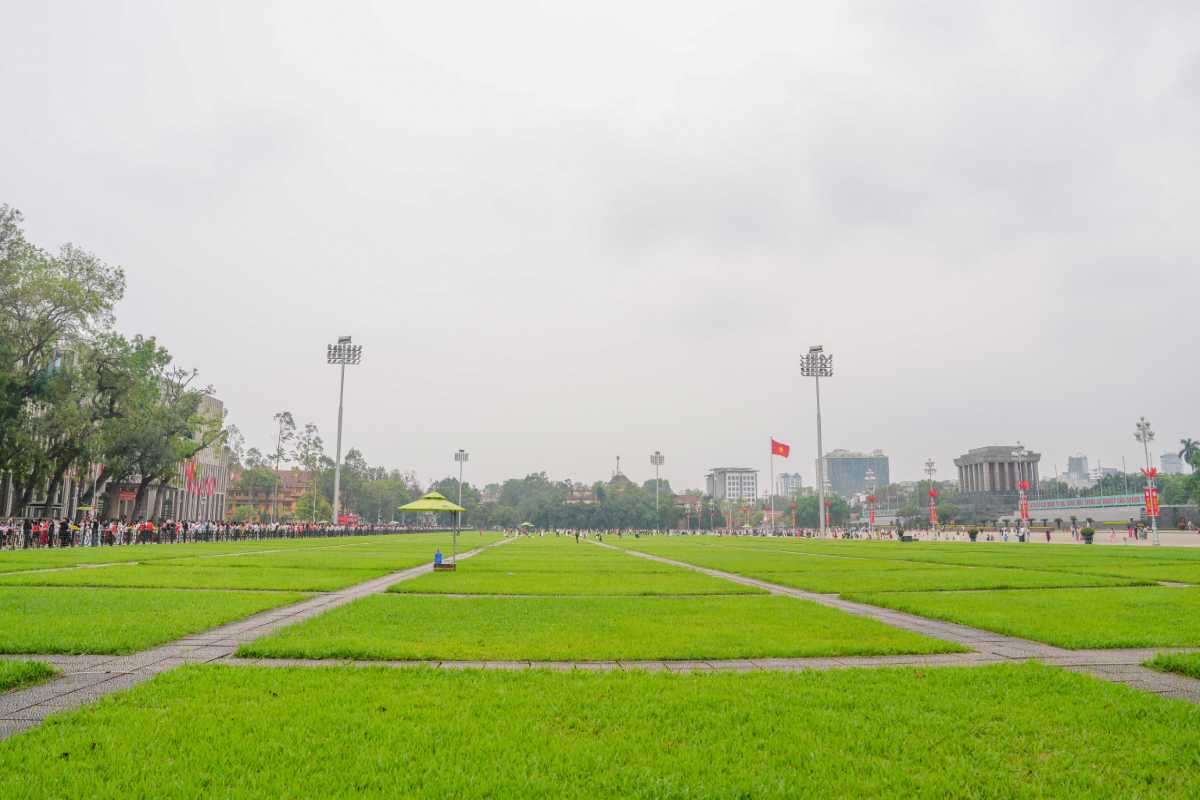
Participating in or observing cultural ceremonies
The Ba Dinh Square flag ceremony is a powerful cultural event that draws both locals and tourists alike. Held daily, these ceremonies mark national pride and tradition with dignified rituals.
Visiting during Vietnam national holidays offers even more vibrant celebrations, showcasing the country’s rich heritage and collective spirit. Understanding the timing and significance of these events helps you plan a visit that includes these meaningful experiences.
- The daily flag ceremony starts at sunrise and lasts about 15 minutes.
- National celebrations such as Independence Day feature large public gatherings and performances.
- Visitors should arrive early to secure good viewing spots and respect ceremonial protocols.
Engage with Ba Dinh Square flag ceremony traditions to witness Vietnam’s cultural heartbeat firsthand.
Flag raising and lowering rituals
Ba Dinh Square’s flag raising and lowering rituals are daily ceremonies steeped in respect and tradition.
- The flag is raised at sunrise in a solemn ceremony lasting approximately 15 minutes.
- At sunset, the flag is lowered with equal reverence.
- Visitors are asked to maintain silence and follow instructions during the ceremonies.
- Photography is allowed, but disruptive behavior is discouraged to preserve solemnity.
These rituals provide a unique window into Vietnam’s national pride and customs.
Experience Ba Dinh Square flag raising rituals to connect with Vietnam’s enduring traditions.
Special events during national holidays
Ba Dinh Square transforms into a vibrant hub during Vietnam’s major national holidays, hosting events that celebrate the country’s history and culture.
- Independence Day on September 2 features military parades and public speeches.
- The Tet Festival brings colorful performances, traditional music, and festive decorations.
- Other cultural events include commemorations and public gatherings reflecting Vietnamese heritage.
- Visitors during these times should expect larger crowds and enhanced security measures.
Attending these special events offers an unforgettable glimpse into Vietnam’s national pride and communal spirit.
Plan your visit around Vietnam national holidays Ba Dinh Square to experience these exceptional cultural celebrations.
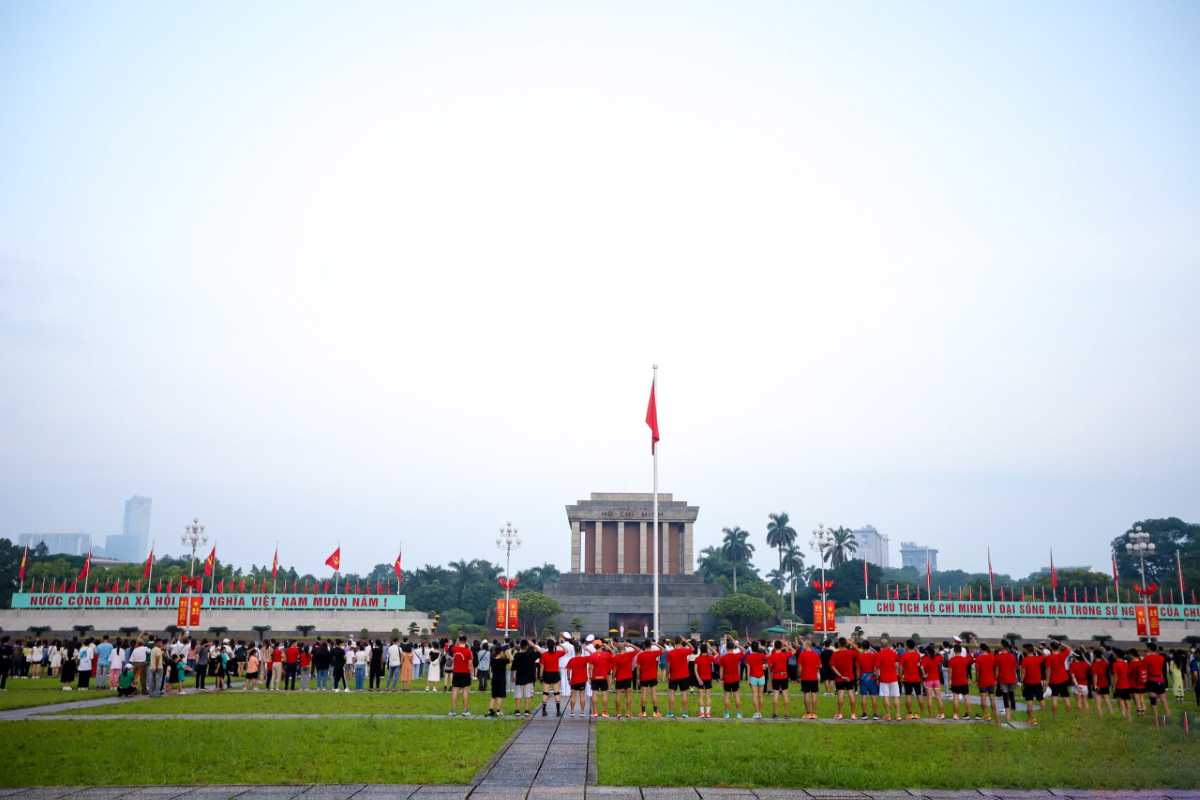
Guided tours and self-guided exploration
Ba Dinh Square tours offer flexible options for visitors seeking either guided experiences or independent exploration. Whether you prefer the insights of a knowledgeable guide or the freedom of self-paced discovery, there are resources to suit your style.
Many Hanoi tour operators provide expert-led visits focusing on Ba Dinh Square’s history and cultural significance. For self-guided travelers, apps and maps help navigate the area with ease and depth.
Choose from Ba Dinh Square tours that fit your preferences and make the most of your visit.
Recommended tour providers and apps
Reliable tour providers and apps make exploring Ba Dinh Square simple and informative.
- Asia Travel Links offers guided tours with expert local guides who share in-depth history and insider tips.
- Popular travel apps like Google Maps and Viator provide self-guided tour options with customizable routes.
- Booking platforms feature reviews to help choose the best tours suited to your interests.
- Many providers include transportation and skip-the-line access for convenience.
Use trusted Ba Dinh Square tour companies and the best Hanoi travel apps to plan your perfect visit.
Suggested walking routes and points of interest
Exploring Ba Dinh Square on foot reveals a wealth of cultural landmarks and scenic spots.
- Start at the Ho Chi Minh Mausoleum and proceed to the One Pillar Pagoda for historic insights.
- Follow walking routes that pass the Presidential Palace Hanoi and surrounding gardens.
- Nearby points of interest include the Temple of Literature and Hoa Lo Prison Museum.
- The routes offer photo opportunities and chances to experience Hanoi’s vibrant street life.
Discover Ba Dinh Square walking routes and points of interest near Ba Dinh Square to navigate effectively and enjoyably.
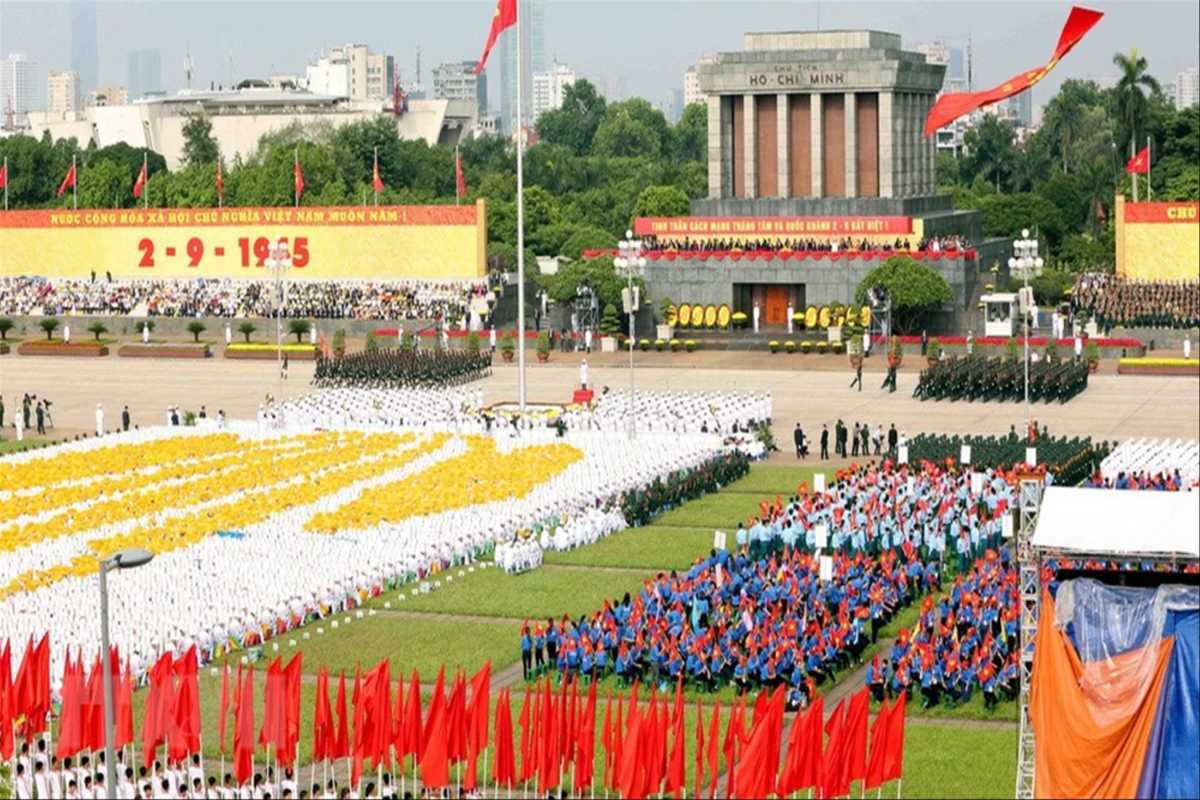
Photography and sightseeing tips
Ba Dinh Square photography tips help you capture stunning images while respecting the site’s cultural and security guidelines. Knowing the best times and locations enhances your visual experience and ensures a smooth visit.
Following established rules keeps the atmosphere respectful and preserves the dignity of this historic landmark. With thoughtful planning, you can enjoy both sightseeing and photography to the fullest.
Use these Ba Dinh Square photography tips to create memorable photos and navigate the area respectfully.
Best times and spots for capturing iconic views
For the best photos at Ba Dinh Square, timing and location are key.
- Early morning light offers soft, golden hues ideal for photographing monuments.
- Sunset provides dramatic lighting for capturing the square’s expansive layout.
- Popular spots include the area in front of the Ho Chi Minh Mausoleum and views from the nearby gardens.
- Avoid midday to reduce harsh shadows and crowds in your shots.
These tips help you plan perfect photographic moments during your visit.
Discover the best photography spots Ba Dinh Square and capitalize on golden hour Ba Dinh Square photos for stunning results.
Rules and restrictions for photography
Respect for Ba Dinh Square’s cultural and security environment requires following specific photography rules.
- Photography is prohibited inside the Ho Chi Minh Mausoleum.
- Use of tripods and drones is generally not allowed on the square.
- Maintain a respectful distance from ceremonial areas during flag rituals.
- Always comply with instructions from security personnel.
Observing these guidelines ensures a safe and respectful visit for all.
Follow Ba Dinh Square photography restrictions and prohibited photography areas to avoid penalties.
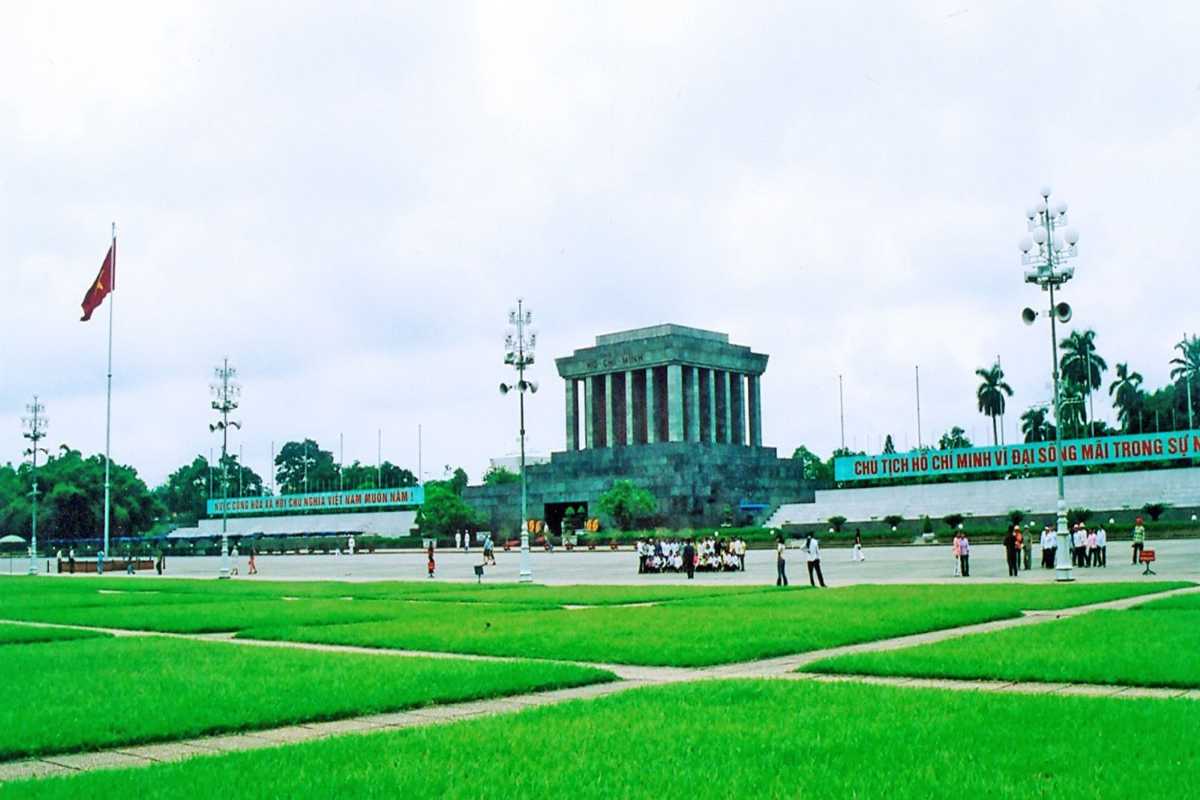
Exploring nearby attractions
Beyond Ba Dinh Square, several cultural sites offer enriching experiences that complement your visit. These attractions showcase Hanoi’s rich history, traditional architecture, and vibrant local life, making them ideal additions to your itinerary.
From the scholarly grounds of the Temple of Literature to the poignant exhibits at Hoa Lo Prison Museum, each site reveals different facets of Vietnam’s heritage. The bustling Hanoi Old Quarter and scenic West Lake also provide lively settings for exploration and relaxation.
Include these destinations to deepen your understanding and enjoyment of Hanoi’s diverse cultural landscape.
Temple of Literature
The Temple of Literature is Vietnam’s first university and a stunning example of Confucian heritage. Founded in 1070, it served as an educational center for scholars and mandarins.
- The site features traditional Vietnamese architecture, serene gardens, and ancient stone steles.
- It hosts cultural events that celebrate Vietnam’s literary history.
- Visiting Temple of Literature Hanoi offers insight into Vietnam’s educational and philosophical roots.
This tranquil landmark is a must-see for history lovers and cultural enthusiasts alike.
Learn about Temple of Literature cultural significance during your Hanoi visit.
Hoa Lo Prison Museum
Hoa Lo Prison Museum presents a sobering history of Vietnam’s struggle during the French colonial era and the Vietnam War. Known as the “Hanoi Hilton” during the war, it offers a detailed narrative of imprisonment and resistance.
- Exhibits include original cells, artifacts, and prisoner stories.
- The museum educates visitors about French colonial repression and wartime experiences.
- Tickets can be purchased onsite or through official websites.
- Visiting Hoa Lo Prison Museum reveals an important chapter in Vietnam’s resilience.
Plan your visit with Hoa Lo Prison Museum tickets and explore the museum’s poignant exhibits.
Hanoi Old Quarter and West Lake
The Hanoi Old Quarter offers a bustling maze of narrow streets filled with shops, markets, and street food vendors, reflecting the city’s vibrant local culture. Just a short distance away, West Lake provides a peaceful retreat with scenic views and boat tours.
- Explore the Old Quarter’s historic architecture and lively atmosphere.
- Discover unique things to do in Hanoi Old Quarter including shopping and sampling street cuisine.
- Enjoy boat tours on West Lake Hanoi for relaxing scenery and photo opportunities.
- Both areas are easily accessible from Ba Dinh Square, ideal for day trips.
Expand your Hanoi itinerary with visits to Hanoi Old Quarter and West Lake for diverse cultural experiences.
Discover things to do in Hanoi Old Quarter and West Lake Hanoi boat tours to enrich your travel plans.
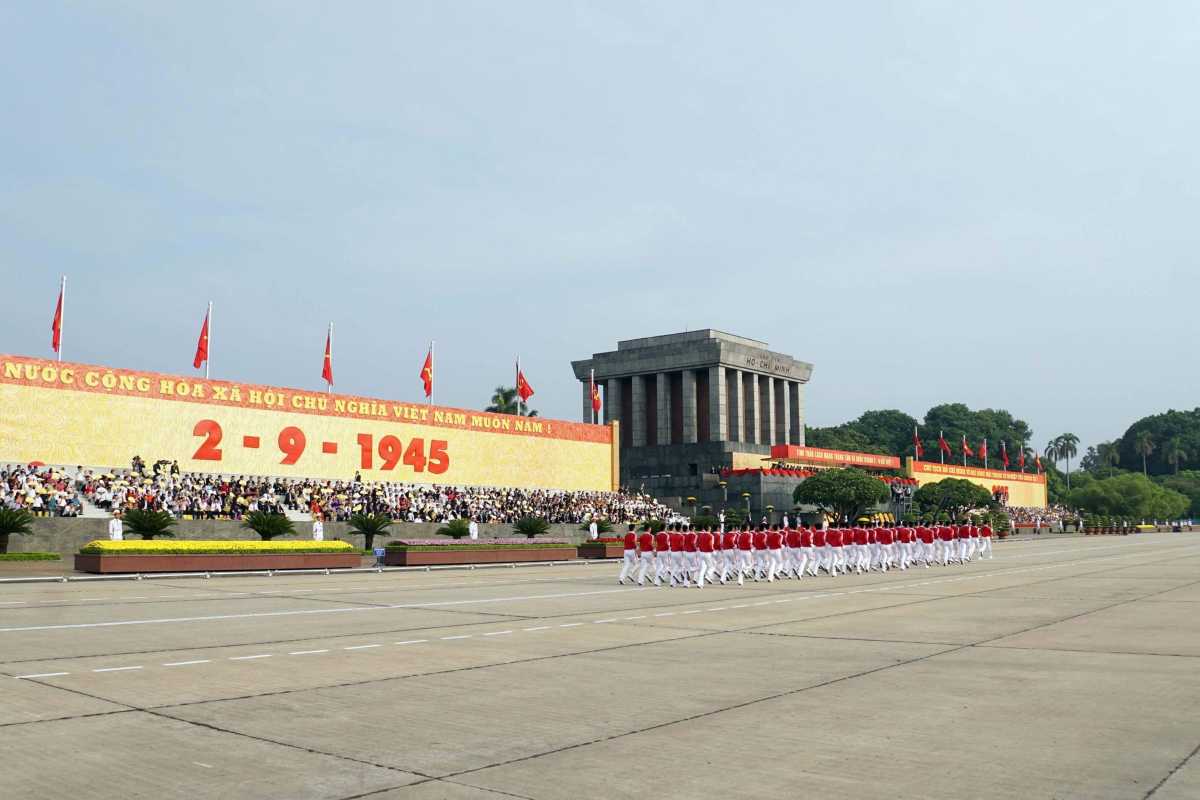
Conservation and Cultural Preservation
Ba Dinh Square conservation is a vital ongoing effort to protect this iconic site’s historical and cultural legacy. Maintaining the square’s monuments and environment ensures future generations can appreciate its significance.
Challenges such as visitor impact and urban development require balanced strategies that combine preservation with sustainable tourism. Educating visitors about responsible practices helps minimize damage and supports Vietnam’s cultural heritage.
Learn how Ba Dinh Square conservation efforts work and discover ways you can contribute to preserving this treasured landmark.
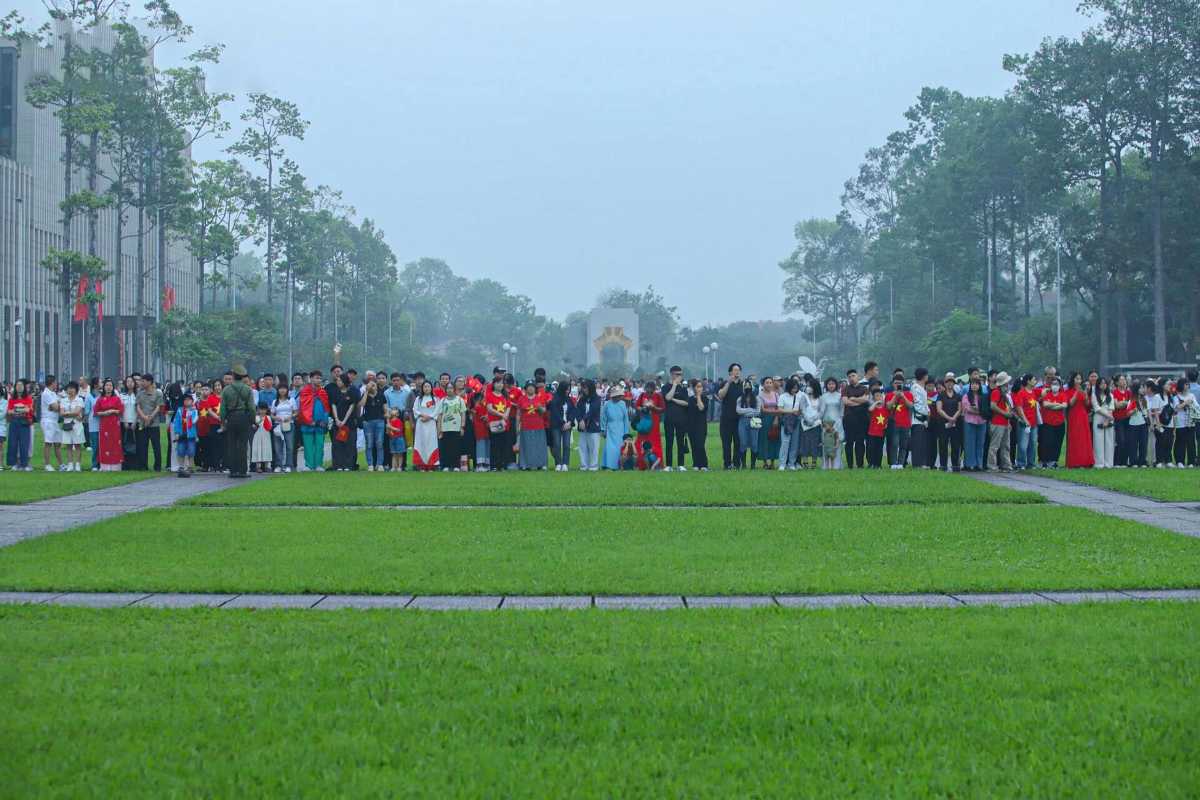
Government and local efforts in preservation
The preservation of Ba Dinh Square is supported by coordinated government programs and local initiatives dedicated to cultural heritage protection.
Official efforts focus on monument upkeep, crowd management, and enforcing regulations that safeguard the site’s integrity. Public awareness campaigns educate visitors about respecting the square and its significance.
- Ba Dinh Square preservation efforts include routine inspections and repairs of key structures.
- Cultural heritage protection Hanoi policies regulate visitor behavior and development projects.
- Collaboration between government bodies and local communities enhances conservation impact.
These actions underline the commitment to maintaining Ba Dinh Square’s historic value.
Discover how Ba Dinh Square preservation efforts sustain this cultural treasure.
Maintenance of monuments and green spaces
Regular maintenance preserves both the physical monuments and the surrounding green spaces of Ba Dinh Square.
- Structural repairs and cleaning protect historic buildings and statues.
- Landscaping and gardening sustain the square’s natural beauty and visitor comfort.
- Environmental management includes waste control and pollution prevention.
- Seasonal upkeep ensures pathways and facilities remain safe and accessible.
These practices keep Ba Dinh Square attractive and well-preserved year-round.
Learn about Ba Dinh Square monument maintenance and green space preservation Hanoi to appreciate these efforts.
Regulations to protect historical integrity
Strict regulations govern activities within Ba Dinh Square to protect its authenticity and historical importance.
- Ba Dinh Square preservation regulations restrict unauthorized construction and commercial activities.
- Historical site protection laws enforce penalties for damage or neglect.
- Visitor guidelines promote respectful behavior and limit access to sensitive areas.
- Conservation policies support sustainable tourism practices within the square.
These legal frameworks ensure the long-term safeguarding of Ba Dinh Square’s cultural heritage.
Understand Ba Dinh Square preservation regulations and historical site protection laws to support responsible tourism.
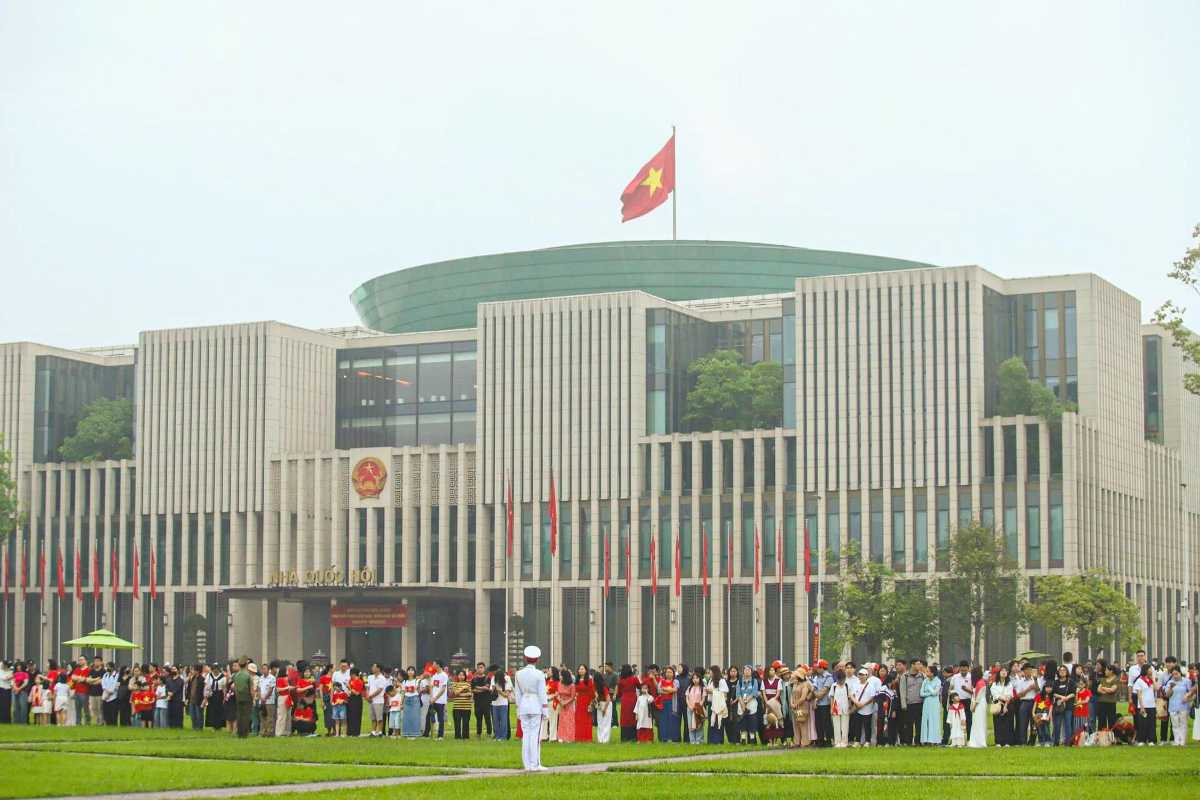
Sustainable tourism initiatives
Sustainable tourism initiatives in Hanoi focus on preserving the cultural and natural heritage of sites like Ba Dinh Square. These efforts aim to reduce the environmental and cultural impact of tourism while promoting responsible behavior.
Encouraging visitors to respect local traditions, minimize waste, and support eco-friendly practices ensures that future generations can also enjoy these historic locations. Hanoi’s commitment to sustainability helps maintain its charm without compromising its integrity.
Learn about sustainable tourism in Hanoi and how you can contribute to responsible travel during your visit to Ba Dinh Square.
Visitor education and responsible behavior campaigns
Visitor education plays a key role in promoting responsible tourism at Ba Dinh Square, encouraging visitors to respect both the cultural heritage and the local environment.
- Educational programs provide information on the importance of preserving Ba Dinh Square’s monuments.
- Cultural respect campaigns encourage visitors to avoid disruptive behavior and adhere to local customs.
- Guidelines emphasize the responsible use of photography and appropriate attire.
- Visitor awareness initiatives are regularly promoted through signage and social media channels.
These efforts aim to create a positive experience for both tourists and the local community.
Understand visitor education on responsible tourism and join cultural respect campaigns at Ba Dinh Square.
Impact of tourism and measures to mitigate damage
Tourism’s impact on cultural and environmental resources at Ba Dinh Square is a growing concern, requiring strategies to minimize damage.
- Increased foot traffic can erode pathways and monuments, especially during peak tourist seasons.
- Littering and waste from large crowds can impact the cleanliness of the square.
- Sustainable travel practices like waste reduction and respect for local traditions help alleviate these pressures.
- Mitigation measures include crowd management during peak times and the implementation of eco-friendly waste disposal systems.
These initiatives ensure Ba Dinh Square remains a preserved site for generations to come.
Learn about tourism impact mitigation and how Ba Dinh Square visitor impact can be reduced through responsible actions.

Opportunities for visitors to contribute
Visitors to Ba Dinh Square have numerous opportunities to actively participate in its preservation and support the cultural heritage of Hanoi. Through volunteering and educational tours, tourists can contribute directly to the safeguarding of this iconic landmark.
Getting involved not only enriches the travel experience but also helps ensure that future generations can enjoy the cultural and historical significance of Ba Dinh Square.
Explore ways to contribute to the preservation of Ba Dinh Square and other Hanoi cultural treasures.
Volunteering and supporting cultural programs
Volunteering at Ba Dinh Square offers a meaningful way to give back to the community and support ongoing preservation efforts.
- Participate in local programs focused on environmental sustainability and cultural education.
- Volunteer opportunities include assisting with guided tours or helping maintain the square’s cleanliness.
- Community tourism programs promote responsible tourism practices and heritage conservation.
- Volunteers often work with local NGOs and government initiatives to protect the area’s cultural integrity.
These opportunities allow visitors to make a positive impact during their time in Hanoi.
Join volunteering cultural preservation Hanoi and contribute to the lasting legacy of Ba Dinh Square.
Participating in guided educational tours
Guided educational tours at Ba Dinh Square provide an immersive way to deepen your understanding of Vietnam’s history and culture while supporting its preservation.
- These tours are led by knowledgeable guides who share in-depth insights into the historical significance of the square and its monuments.
- Cultural heritage tours Ba Dinh Square highlight the square’s historical value and ongoing conservation efforts.
- Tours often include opportunities to ask questions and engage with local experts about the preservation of Hanoi’s landmarks.
- By participating, visitors contribute to local tourism and support educational initiatives that raise awareness about heritage protection.
These tours offer meaningful travel experiences while supporting cultural preservation.
Join guided educational tours Hanoi to learn more about Ba Dinh Square and its historical significance.

Insider Tips and Recommendations
Ba Dinh Square Hanoi insider tips provide valuable information to make your visit more enjoyable and hassle-free. From timing your trip to navigating the area efficiently, these practical suggestions help ensure a smooth and enriching experience.
By knowing the best times to visit, how to avoid crowds, and what to wear, you can focus on enjoying the beauty and history of the square. These tips, along with dining and accommodation recommendations, help you plan a well-rounded and memorable visit to Ba Dinh Square.
Use these Ba Dinh Square Hanoi insider tips to elevate your trip and make the most of your time at this iconic destination.

Best times and days to visit for a serene experience
To enjoy Ba Dinh Square in tranquility, timing your visit is key. The square can get crowded during peak hours, especially in the afternoons and on weekends. For a peaceful experience, plan your visit during off-peak times.
- Early mornings offer quiet surroundings with soft lighting for photos.
- Weekdays are generally less crowded, providing a more serene atmosphere.
- Avoid major national holidays and weekends when the square tends to be busiest.
- The cooler months (October to April) provide a comfortable climate for exploring.
Plan your visit during the best time to visit Ba Dinh Square for a calm and enjoyable experience.

How to avoid crowds and maximize photo opportunities
To capture the perfect shot while avoiding large crowds at Ba Dinh Square, consider these tips:
- Arrive early in the morning or later in the evening for the best lighting and fewer visitors.
- Focus on the iconic Ho Chi Minh Mausoleum and surrounding monuments for unique photo opportunities.
- Explore less crowded corners of the square, such as near the One Pillar Pagoda or the Presidential Palace gardens.
- Use telephoto lenses to avoid getting too close to crowds while photographing.
These tips help you avoid crowds and find the best photo spots at Ba Dinh Square.
Maximize your photo opportunities with these Ba Dinh Square photo tips for a stunning collection of travel memories.

What to wear and how to prepare for the visit
Preparing for a visit to Ba Dinh Square includes wearing appropriate attire and planning for the weather. This ensures comfort and cultural respect during your time at the square.
- Wear light, comfortable clothing in the warmer months, but carry a jacket during the cooler seasons.
- Modest attire is recommended, especially when visiting the Ho Chi Minh Mausoleum.
- Comfortable walking shoes are a must as the square covers a large area.
- Bring sunscreen and water, especially if visiting in the summer heat.
These preparations make for a comfortable and respectful visit to Ba Dinh Square.
Get ready for your visit with these Ba Dinh Square visitor preparation tips to ensure a smooth experience.

Nearby dining and accommodation suggestions
For a complete experience, exploring dining and lodging options near Ba Dinh Square enhances your visit. Whether you seek local delicacies or comfortable accommodations, plenty of choices are available.
- Enjoy Vietnamese cuisine at nearby restaurants such as Quan An Ngon and Pho 10.
- Affordable hotels near Ba Dinh Square include Hanoi Hotel and Old Quarter Hotel.
- Upscale options like the Sofitel Legend Metropole Hanoi offer luxurious stays with convenient access to the square.
- Several cafes around the square offer refreshing drinks and snacks for a break during your visit.
These recommendations ensure a comfortable stay while enjoying the sights and sounds of Hanoi.
Discover nearby dining and accommodation options to complete your Ba Dinh Square experience.

Safety and security tips for visitors
Ensuring your safety and security during a visit to Ba Dinh Square is crucial for a stress-free experience.
- Keep your belongings secure and avoid displaying valuables in public areas.
- Be aware of your surroundings and follow any instructions from local security personnel.
- Avoid crowded areas during peak times to reduce the risk of pickpocketing.
- Respect local customs, especially when visiting religious or political sites like the Ho Chi Minh Mausoleum.
Following these Ba Dinh Square safety tips helps ensure a worry-free visit.
Stay safe during your visit by using these Ba Dinh Square safety tips for a secure and enjoyable experience.

Conclusion
Ba Dinh Square Hanoi is not only a historical landmark but a living testament to Vietnam’s cultural and political journey. Whether you’re exploring the monumental architecture, witnessing national ceremonies, or simply enjoying the serene gardens, Ba Dinh Square offers an unforgettable experience.
Respecting the square’s historical significance and following responsible tourism practices ensures that this cultural gem remains preserved for future generations. Plan your visit with respect and curiosity to fully appreciate its rich heritage.
Visit Ba Dinh Square Hanoi to discover its beauty and importance while supporting its preservation.

Summary of Ba Dinh Square’s significance and visitor appeal
Ba Dinh Square Hanoi holds immense historical and cultural value, representing the heart of Vietnam’s revolutionary past and present. As a central site for political ceremonies and national celebrations, it stands as a symbol of unity, independence, and national pride.
- The Ho Chi Minh Mausoleum and surrounding monuments offer a glimpse into Vietnam’s modern history.
- Ba Dinh Square’s historical appeal attracts visitors interested in understanding Vietnam’s path to independence.
- Its accessibility and serene environment make it a popular choice for both tourists and locals.
Ba Dinh Square remains an essential part of Hanoi’s cultural and tourist landscape, drawing visitors from all over the world.
Understand Ba Dinh Square Hanoi summary to gain a deeper appreciation of its importance as a cultural landmark.

Encouragement to explore and respect the site
Ba Dinh Square is more than just a place to visit—it is a space of historical reflection, cultural pride, and national remembrance. When you explore, approach it with respect, as it is a site deeply intertwined with the heart of Vietnam’s identity.
- Follow local guidelines and regulations to ensure a respectful and safe visit.
- Engage with the ceremonies and cultural experiences thoughtfully, honoring Vietnam’s heritage.
- Take time to reflect on the history that Ba Dinh Square represents for the Vietnamese people.
Explore Ba Dinh Square with respect to truly connect with the history and culture it embodies.

Final tips for a memorable and enriching visit
To ensure a smooth and enriching experience at Ba Dinh Square, here are some last-minute tips:
- Arrive early to enjoy the square before it gets crowded, especially if you want to capture great photos.
- Wear comfortable shoes, as you’ll likely walk quite a bit around the square and nearby landmarks.
- Check the schedule for flag ceremonies to witness a significant cultural event during your visit.
- Carry water and sunscreen if visiting during the warmer months.
- Respect local customs and dress modestly when visiting the Ho Chi Minh Mausoleum and other significant sites.
These Ba Dinh Square visit tips help you prepare for an unforgettable and respectful experience.
Make the most of your visit to Ba Dinh Square by following these final tips for a memorable experience.
Mike Nguyen
Travel Advisor
Mobile: +84917506881 (whatsapp available)
Email: contact@asiatravellinks.com
Faqs
Ba Dinh Square is one of the most significant landmarks in Hanoi, Vietnam, both historically and culturally. It is the site where major national events, such as the declaration of independence by Ho Chi Minh, took place, and it remains a hub for important political ceremonies.
- Located in the heart of Hanoi, Ba Dinh Square houses the Ho Chi Minh Mausoleum, which draws visitors from around the world.
- It is a symbol of Vietnamese independence and pride, hosting national celebrations and commemorations.
- The square is also home to several other important monuments, making it a central point for historical reflection in Vietnam.
Ba Dinh Square serves as both a living history lesson and a place of national pride. Visit to explore the deep cultural significance it holds for Vietnam.
Reaching Ba Dinh Square from the Hanoi Old Quarter is relatively easy and can be done by various means of transport.
- By Taxi: The quickest option, taking approximately 10–15 minutes, depending on traffic.
- By Bus: Public buses such as Bus #9, #22, or #34 connect the Old Quarter with Ba Dinh Square.
- By Walking: It is a 20-30 minute walk through the historic streets of Hanoi, offering an opportunity to explore the city.
- By Motorbike: Motorbike taxis are a quick and affordable alternative, though you may want to confirm the price before starting.
No matter your transport choice, Ba Dinh Square is easily accessible from the Old Quarter.
To experience Ba Dinh Square in peace and avoid large crowds, timing is key.
- Early mornings are the best time to visit, as the square is quieter and the lighting is perfect for photos.
- Weekdays tend to be less crowded than weekends, so consider visiting then.
- Avoid major Vietnamese holidays and festivals, as these periods attract a lot of visitors and tourists.
- The cooler months from October to April also provide a more comfortable climate for exploring.
Visiting early or during the off-peak season ensures a more serene and reflective experience at Ba Dinh Square.
Ba Dinh Square itself is free to enter, allowing visitors to freely explore its outdoor areas and monuments.
- The Ho Chi Minh Mausoleum, however, has an entry fee for visitors who wish to enter the mausoleum itself.
- Some nearby museums, such as the Ho Chi Minh Museum, may charge for admission.
- Entry fees for specific attractions within the square are generally modest, with some discounts for students or group tours.
For those interested in fully exploring Ba Dinh Square, check ahead for any entry fees for specific attractions.





